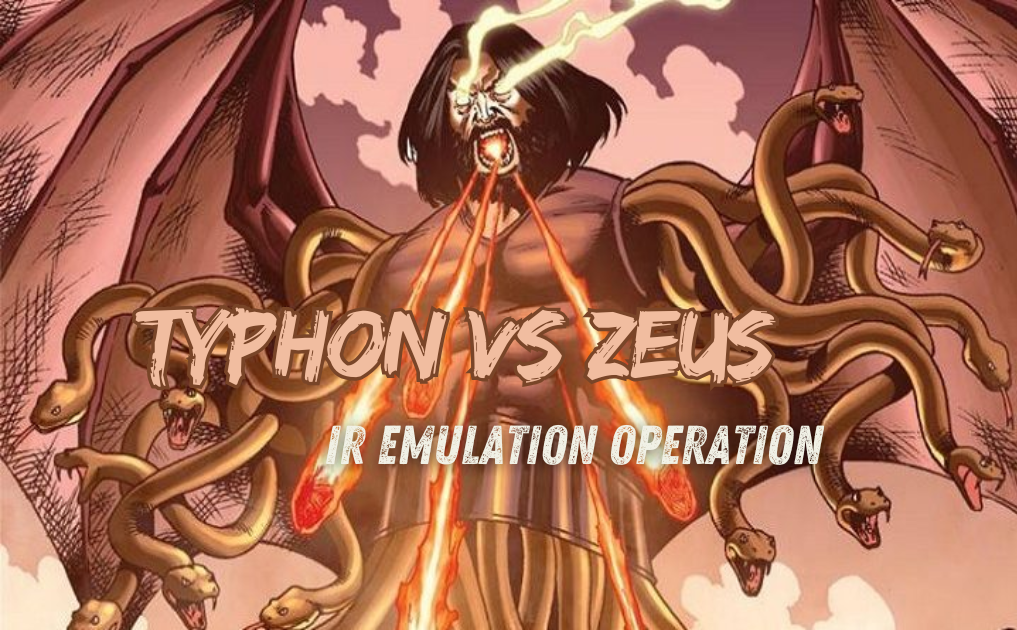
LordoftheThings IR Simulation
Typhon vs Zeus
- The Zeus trojan virus was first created in 2007, when hackers in Eastern Europe used it to target the United States Department of Transportation. While it’s hard to say for certain who created it, the attack really took off when its malicious code became public in 2011. Since then, it has spawned dozens of variants that have kept internet security experts and law enforcement busy. There are two common attack vectors that open Windows computers to Zeus trojan malware attacks. Drive-by downloads require a user to visit a website that has the backdoor trojan code on it. They then download files into the user’s computer without the user’s knowledge. Modern browsers such as Google Chrome usually block these downloads and the sites they are found on, but hackers are constantly implementing new workarounds for this. Meanwhile, older web browsers like Internet Explorer may not block drive-by downloads at all. Zeus’s other main mode of infection is through phishing attacks where users think they are downloading benign software from links in a phishing email or a post on social media.
- The myth of Typhon vs. Zeus is a dramatic and intense episode in Greek mythology, often regarded as the climax of the Titanomachy, or the war between the Olympian gods and their adversaries. This myth exemplifies the ultimate struggle for cosmic order, as Typhon, a chaotic and monstrous force, challenges Zeus, the king of the gods, for supremacy over the universe.
Lab Implementation
Detection Tools Installation
-
First Use Administrator Cmd
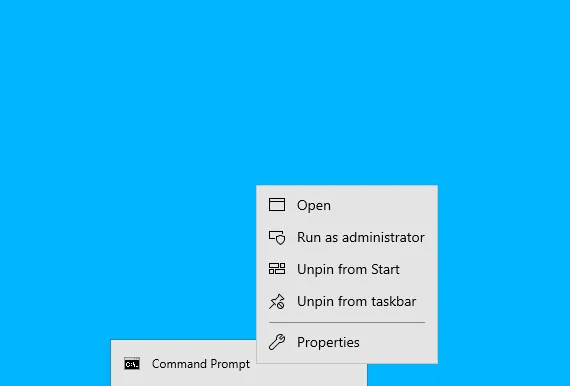
-
Splunk Event Forwarder Installation
- Create Event Receiver Port On Splunk server
- Run Receiver Event Forwarding on port
9997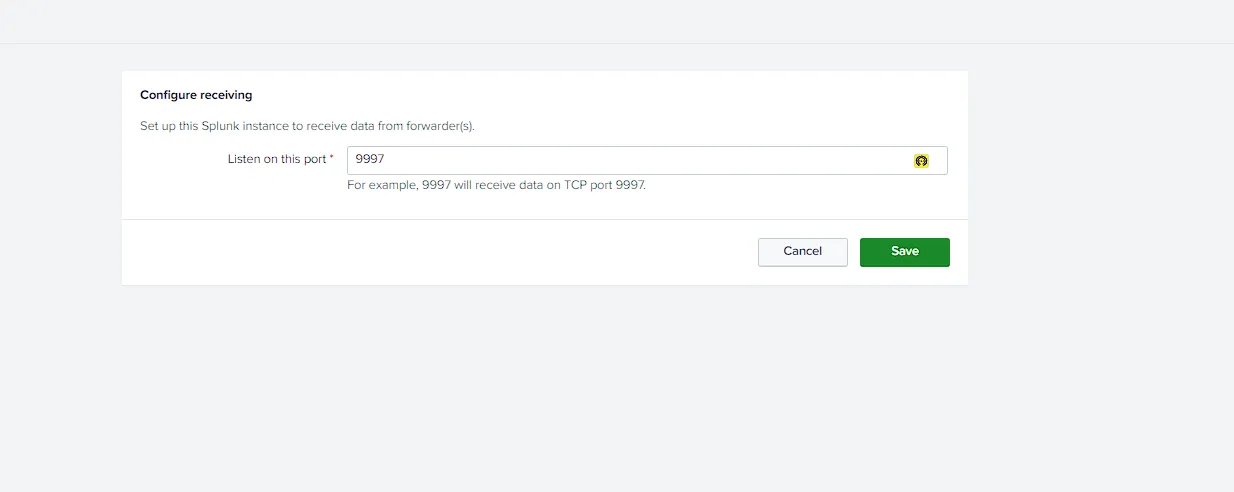
- Install & Forward Events on the Splunk server IP,Port
C:\lab\BlueTeamkit>msiexec.exe /i splunkforwarder-9.0.4-de405f4a7979-x64-release.msi SPLUNKUSERNAME=SplunkAdmin SPLUNKPASSWORD=Ch@ng3d! RECEIVING_INDEXER="IP.IP.IP.IP:9997" WINEVENTLOG_SEC_ENABLE=1 WINEVENTLOG_SYS_ENABLE=1 AGREETOLICENSE=Yes /quiet
- Start Forwarding Windows Event Logs From Splunk
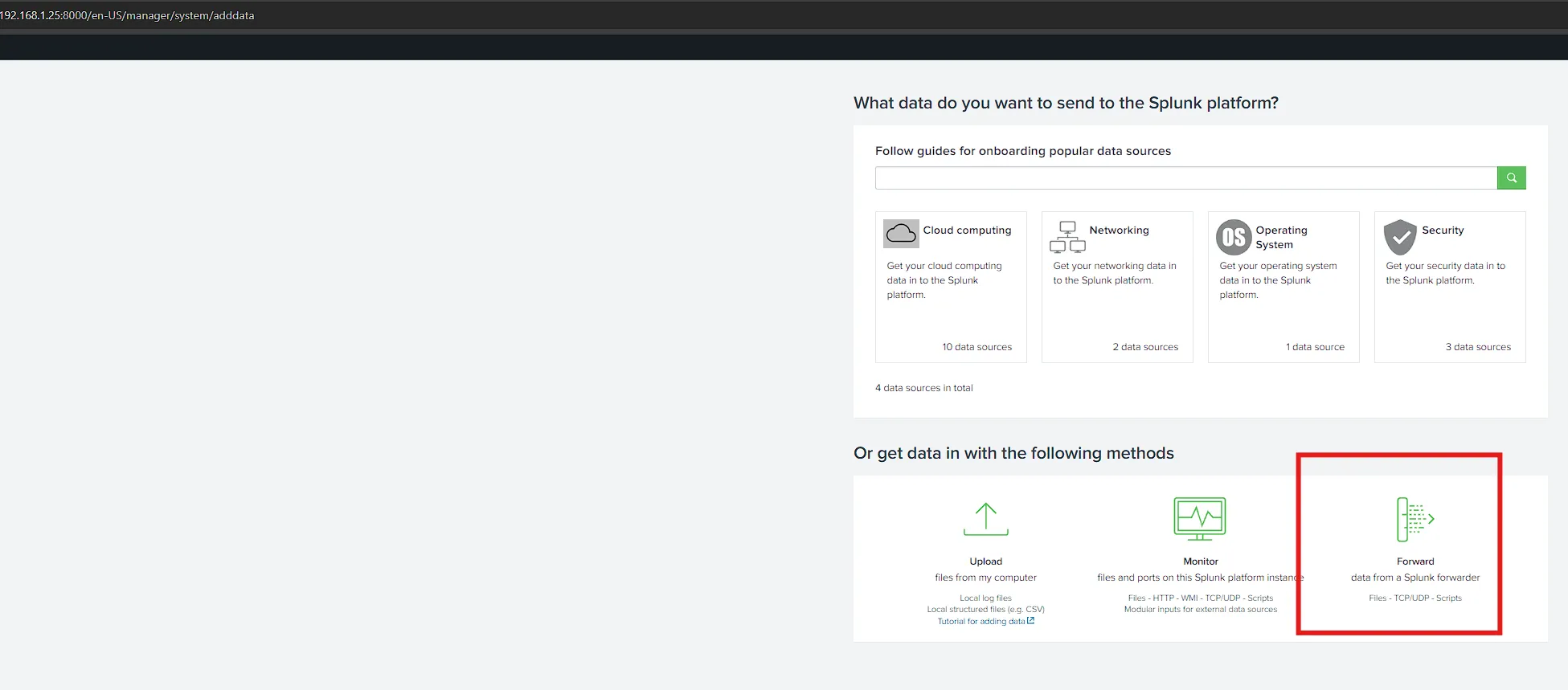
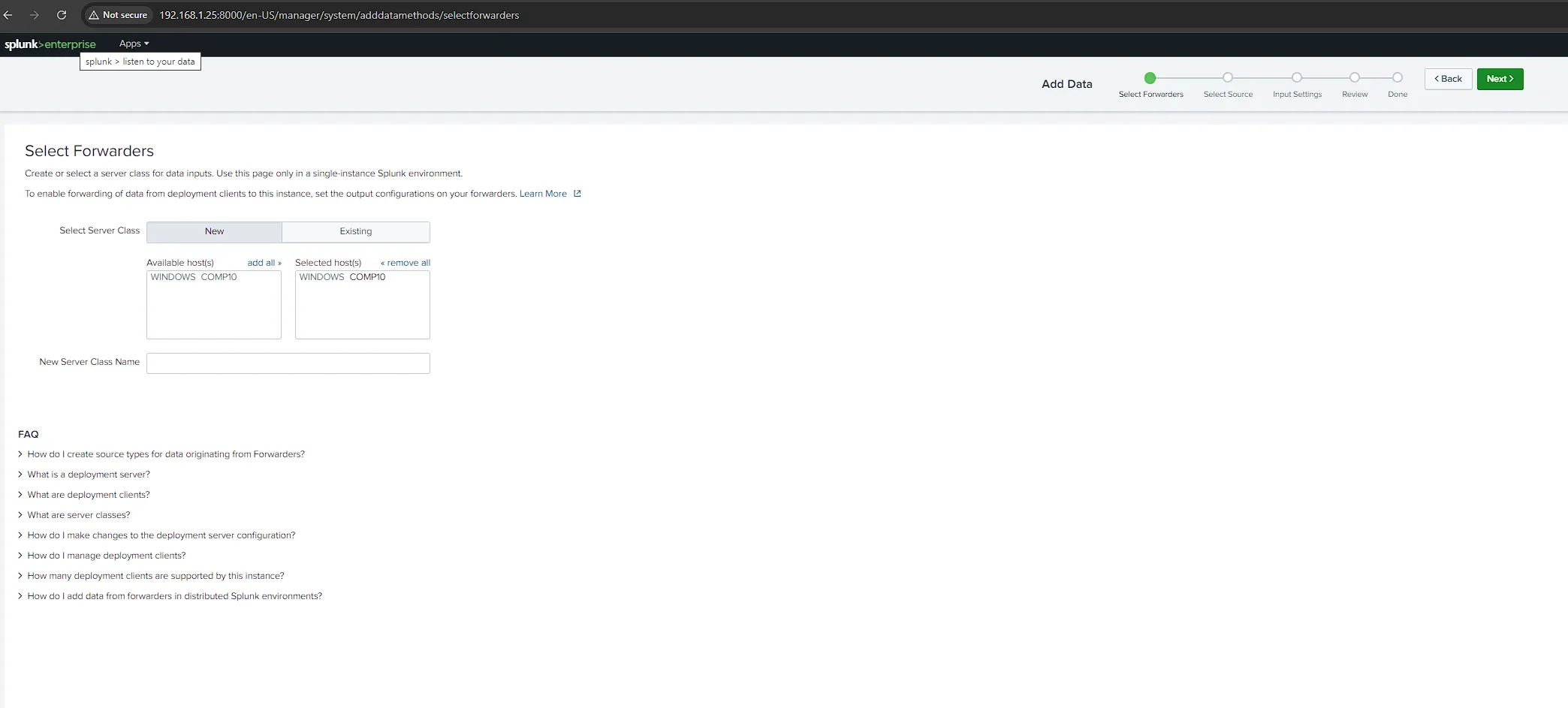
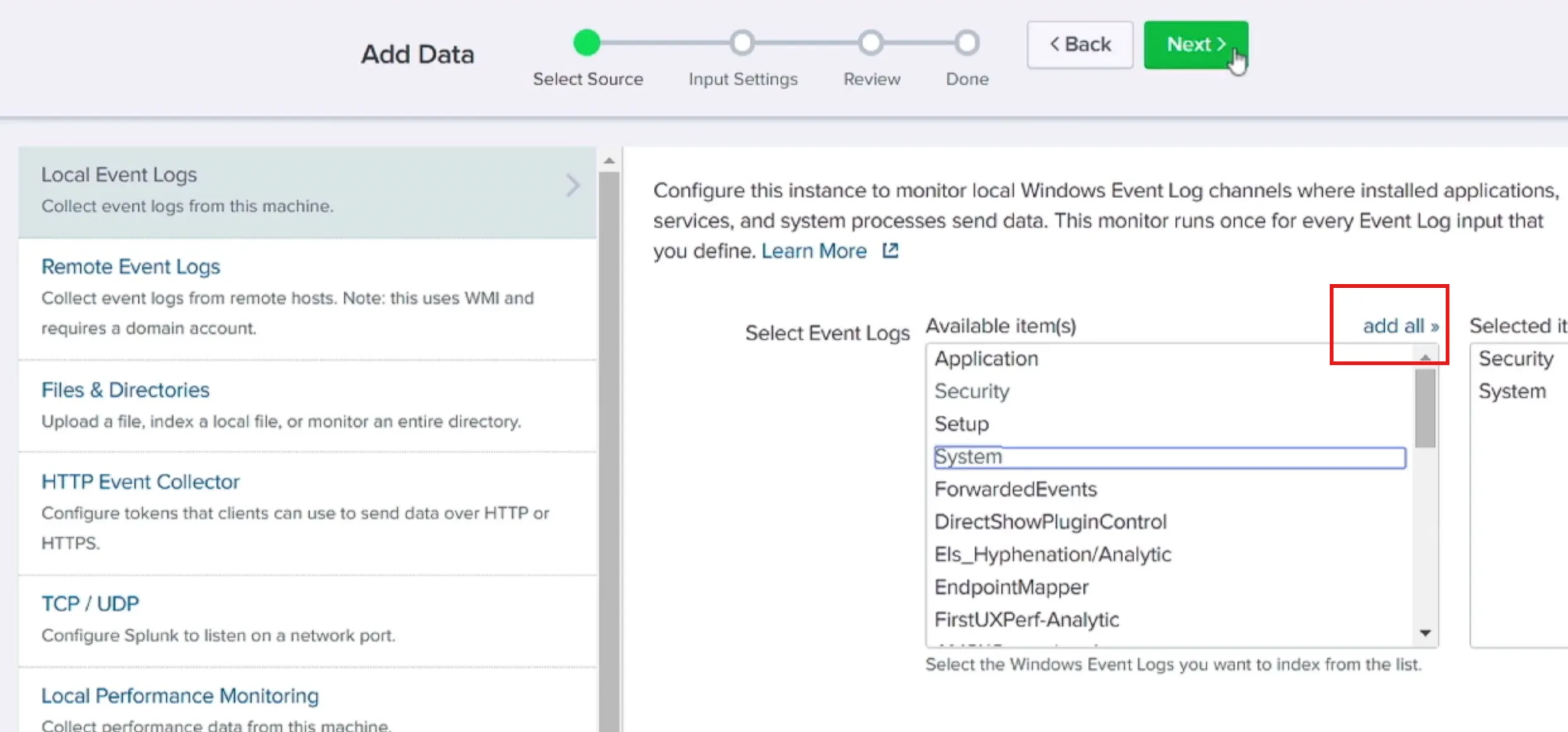
-
Sysmon
-
Target Installation
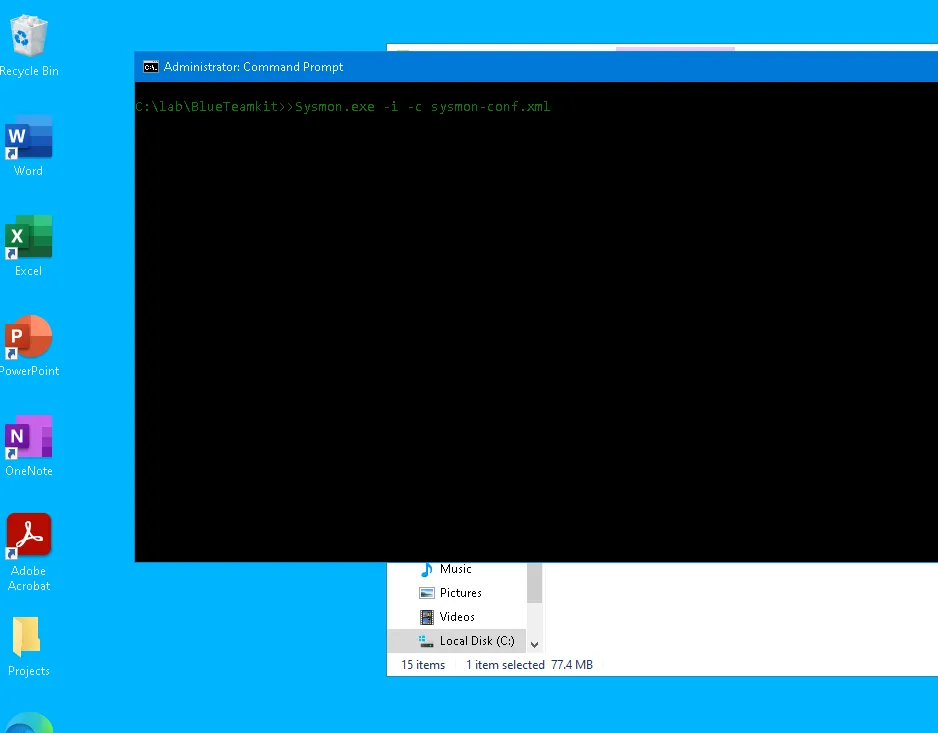
-
Splunk Integration
- Edit Inputs File
In
C:\Program File\SplunkUniversalForwarder\etc\system\default\inputs.confadd some part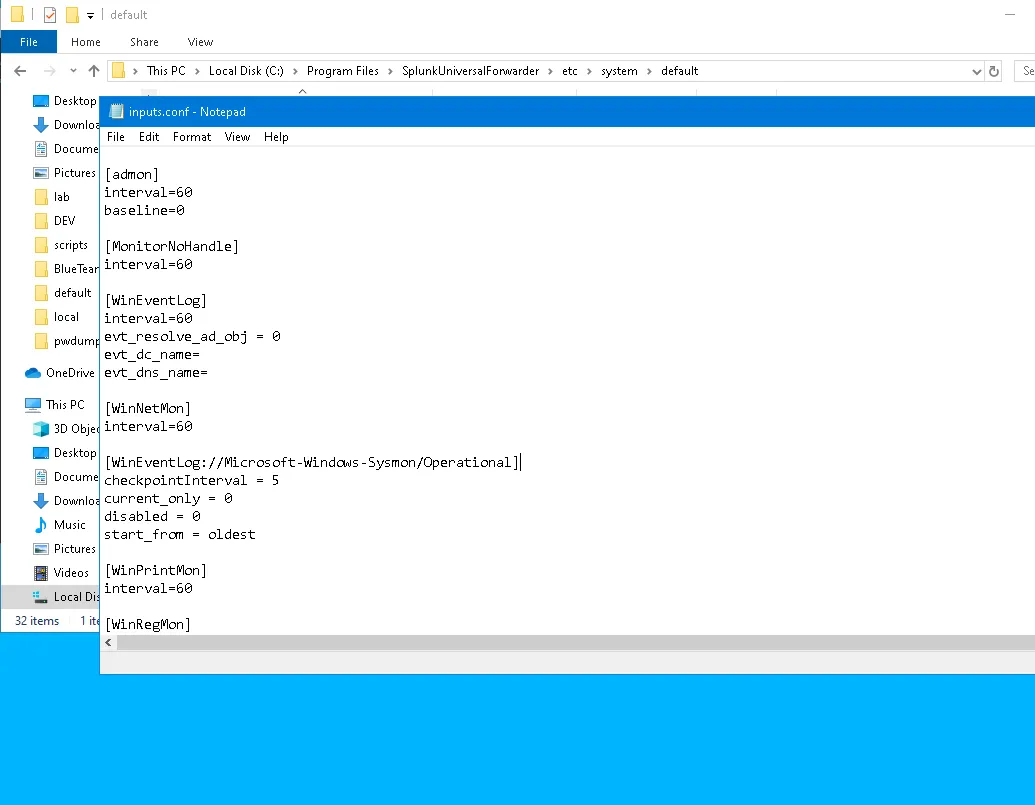
[WinEventLog://Microsoft-Windows-Sysmon/Operational]| checkpointInterval = 5 current_only = 0 disabled = 0 start_from = oldest- Final Result In SEIM
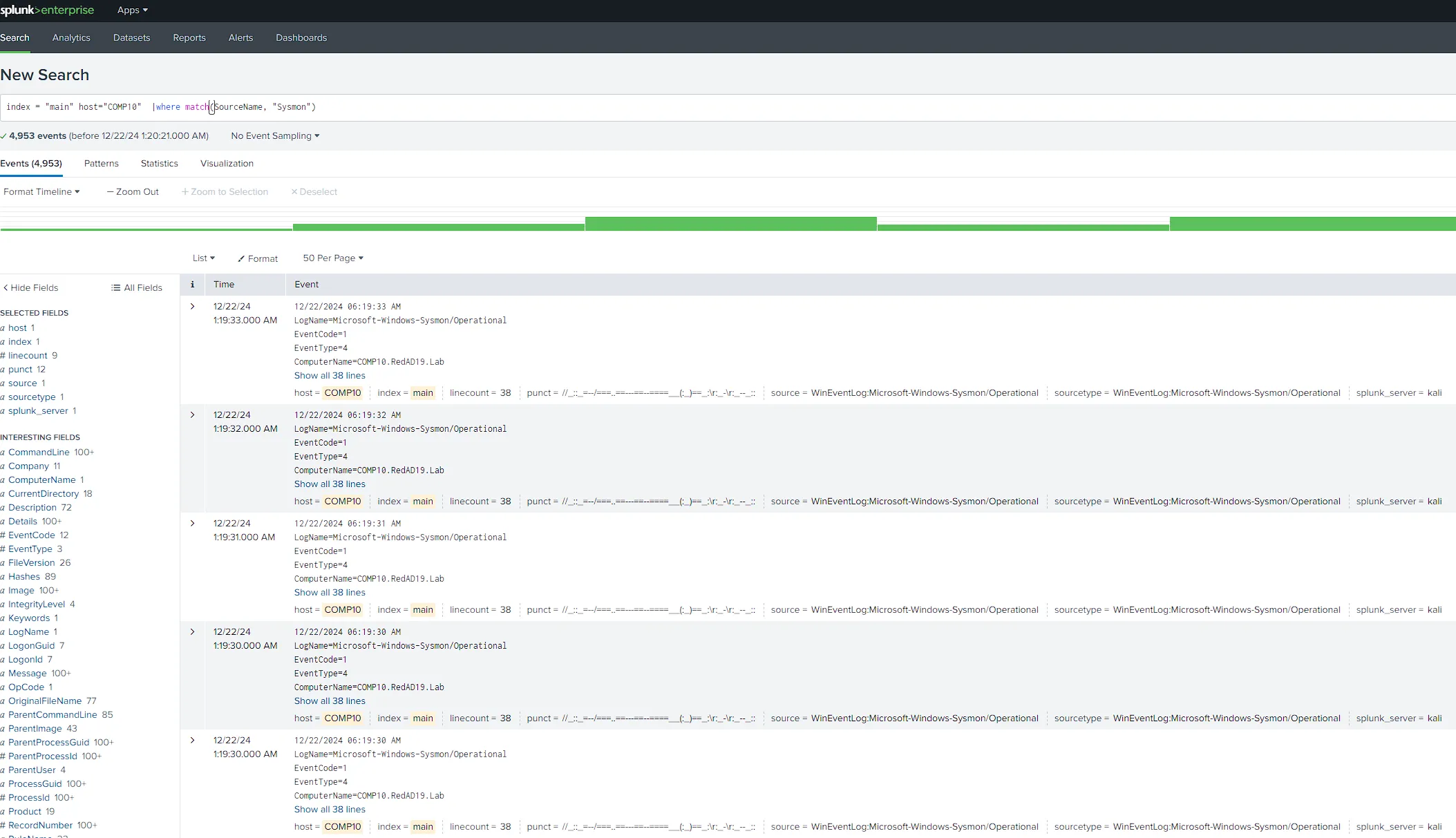
- Edit Inputs File
In
-
-
Suricata
-
Target Installation
- File Download
[suricata.exe][https://www.openinfosecfoundation.org/download/windows/Suricata-7.0.8-1-64bit.msi]
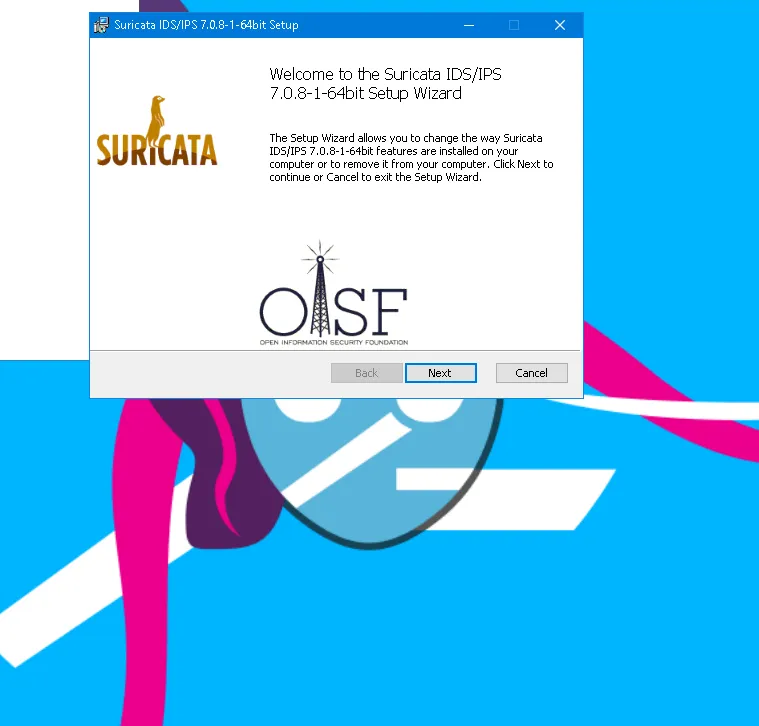
- Install Npcap
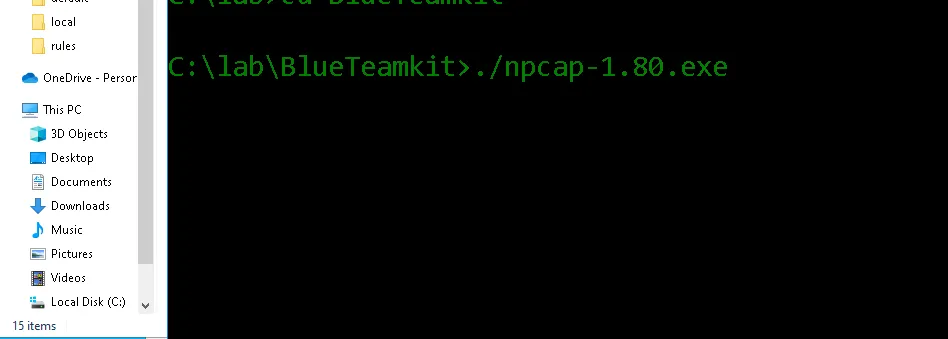
- Rule Updater Module
-
Powershell Script
-
Schedule Task command
-
$action = New-ScheduledTaskAction -Execute "PowerShell.exe" -Argument "-File C:\lab\\BluteamKit\Uppdate-Suricata.ps1" $trigger = New-ScheduledTaskTrigger -Daily -At "10:00AM" Register-ScheduledTask -TaskName "Installation of Software" -Execute "PowerShell.exe" -Argument- Custom rules
-
Adding Custom rules
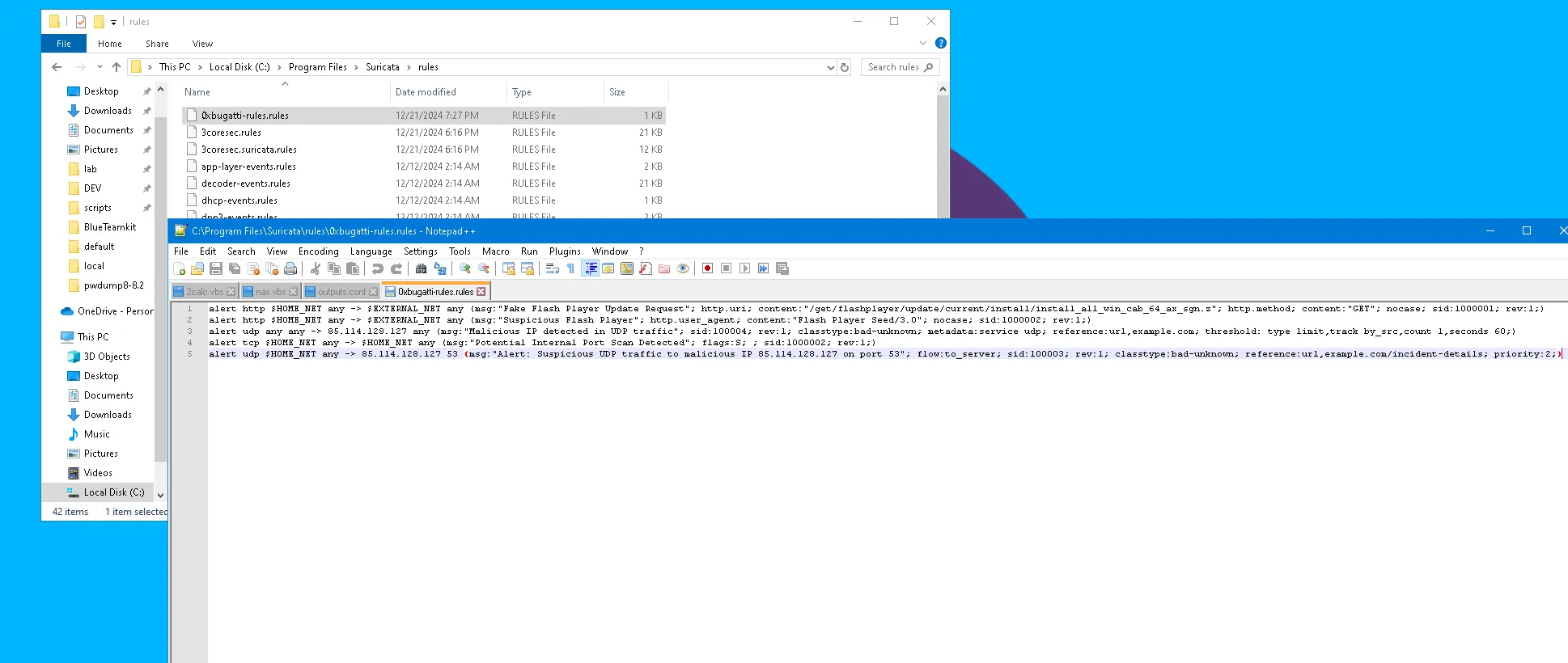
-
Creation of alerting file You can Explore Logs Here
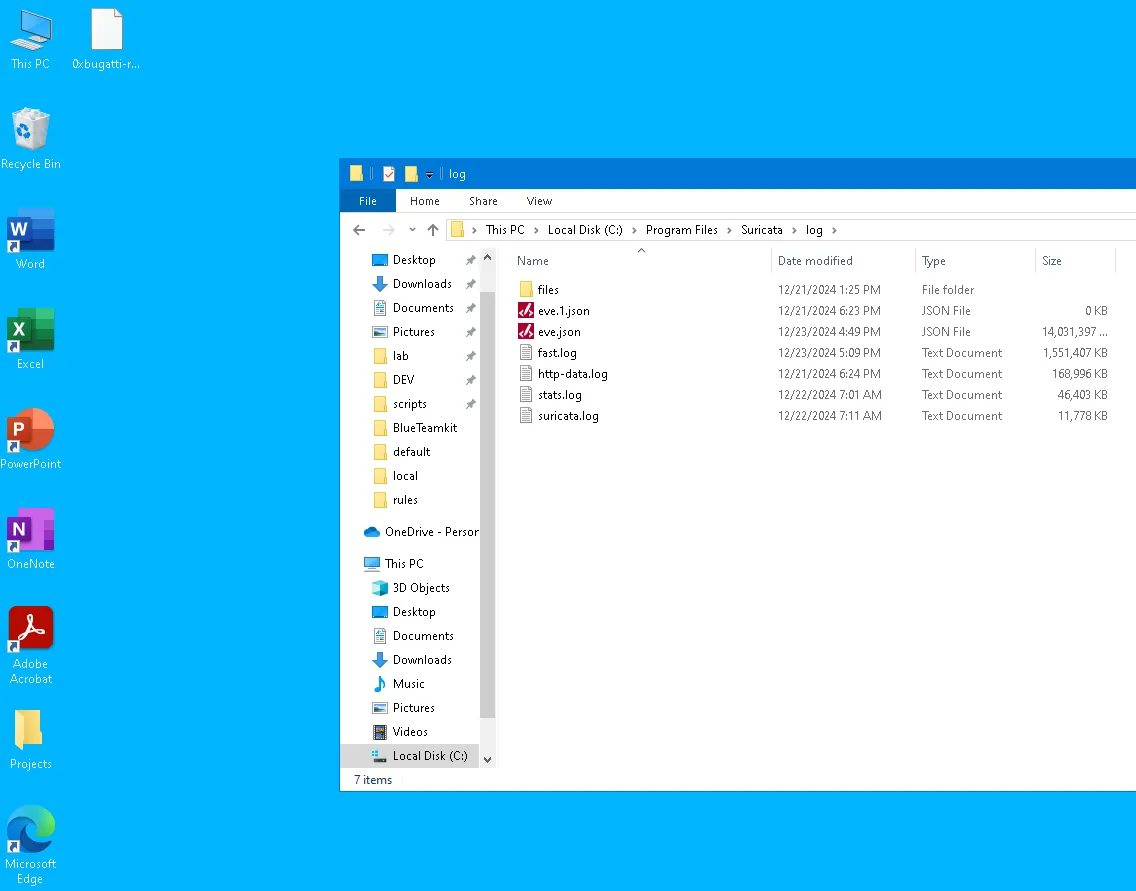

-
- File Download
[suricata.exe][https://www.openinfosecfoundation.org/download/windows/Suricata-7.0.8-1-64bit.msi]
-
Splunk Integration
- Add fast.log Suricata File as New Forwarder


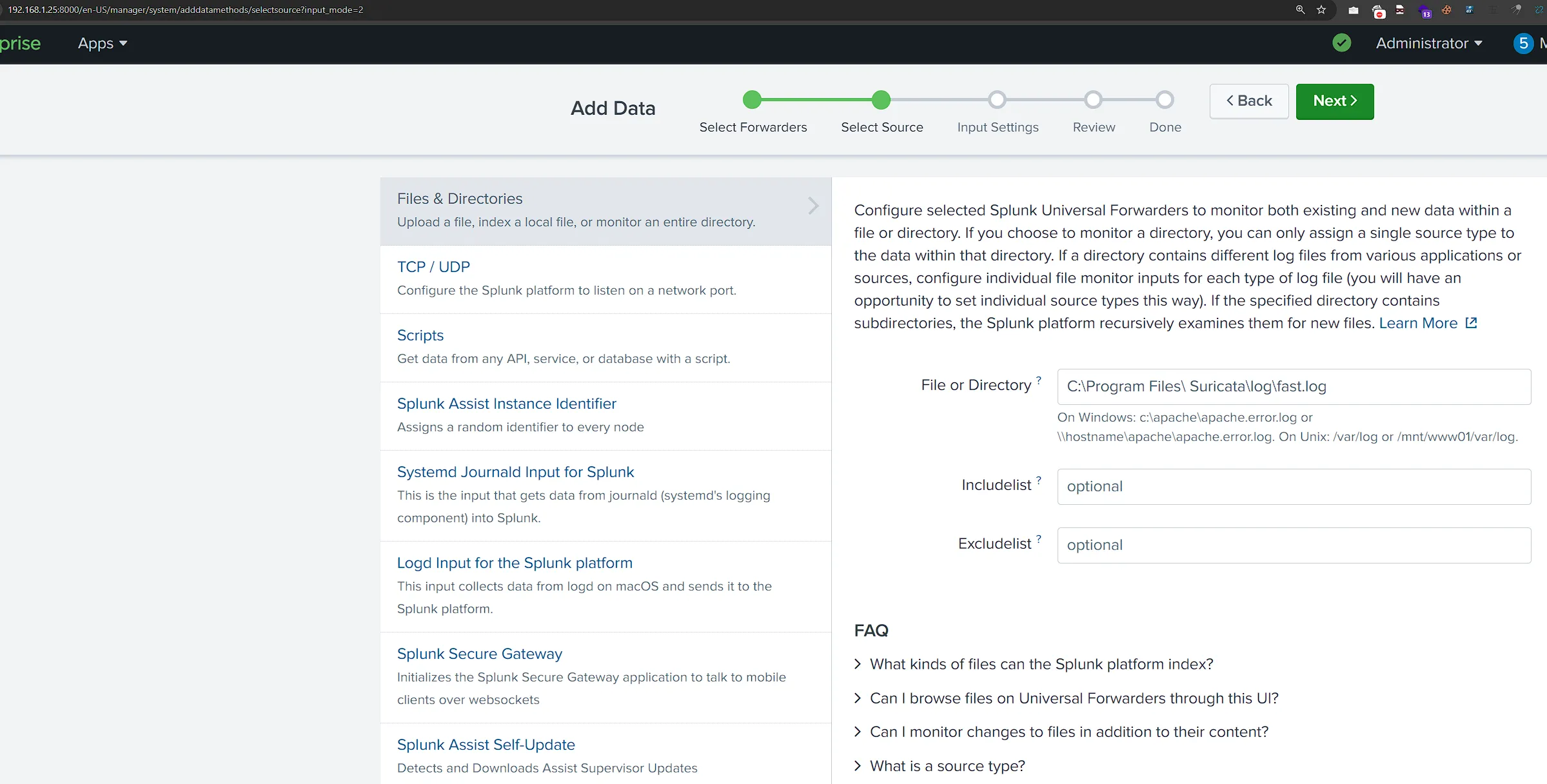
- Dashboard Creation

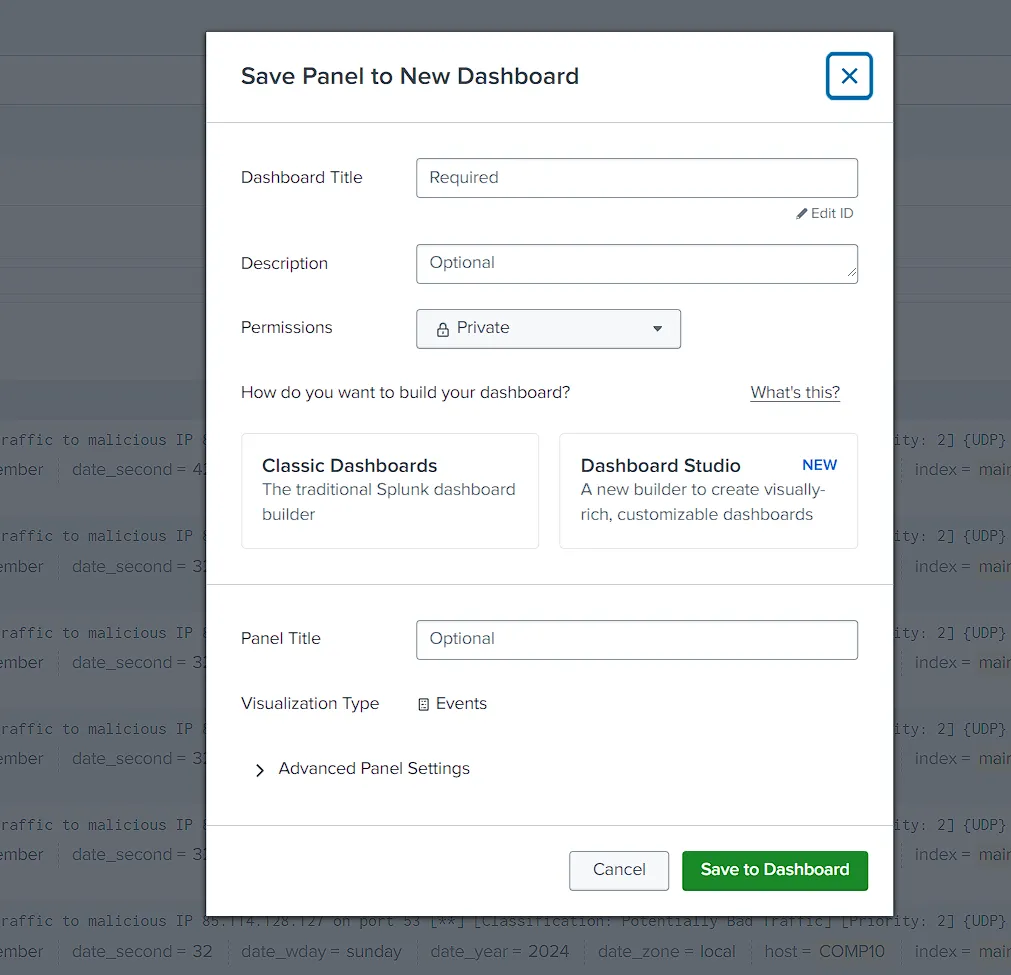
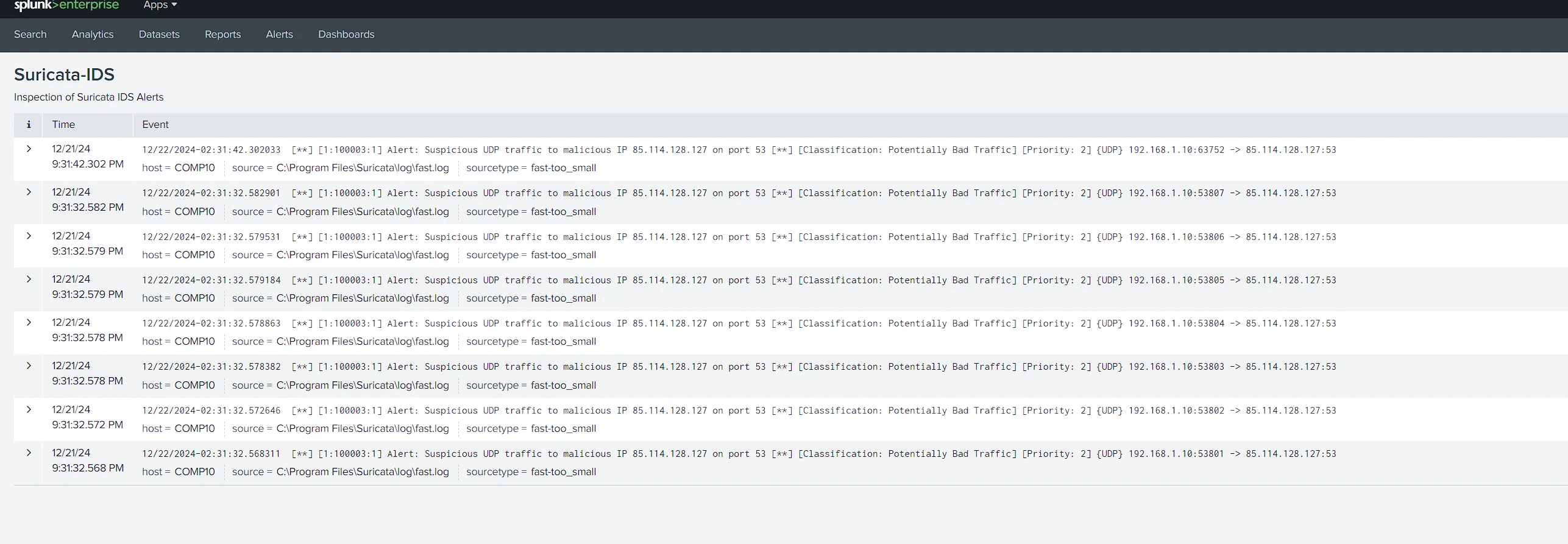
- Add fast.log Suricata File as New Forwarder
-
-
Saving Daily Secure BackUp
All is Done Now and All Detection Works Taking Snapshot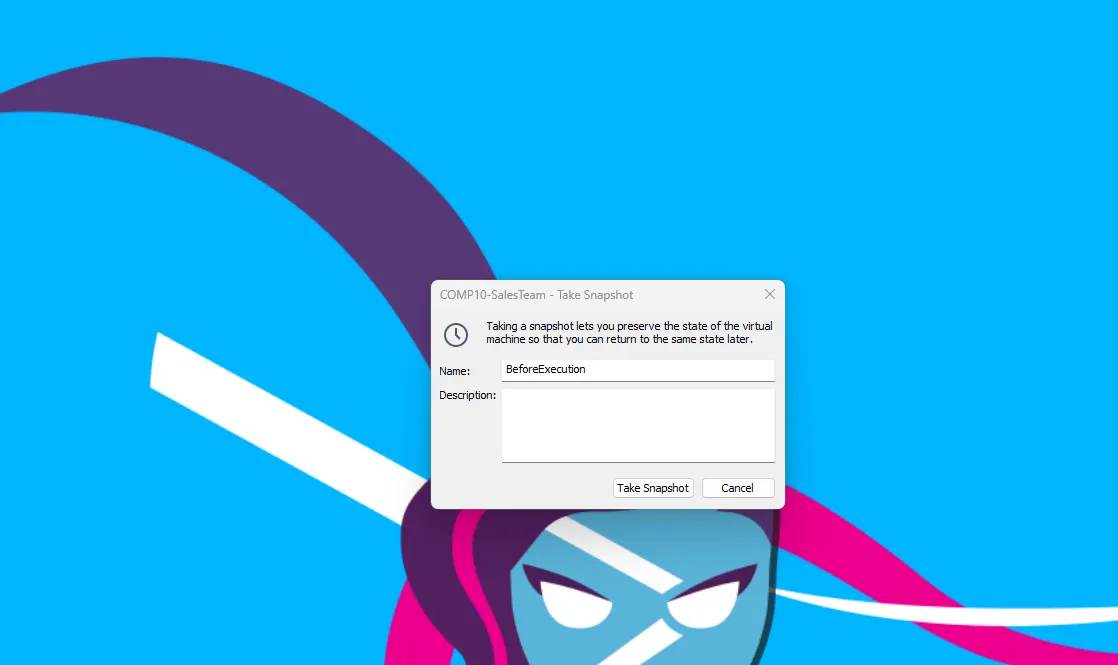
-
Combine & Run All
Using Services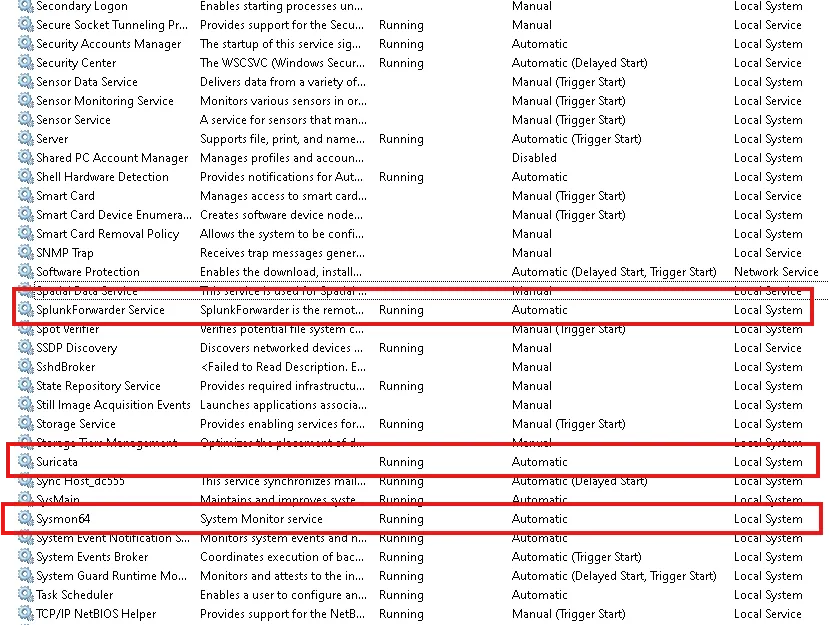
All Is Done Now Lets start Gaming
Scenario of Delivery
Outlook Phishing Mail from
From : [email protected]
to : [email protected]
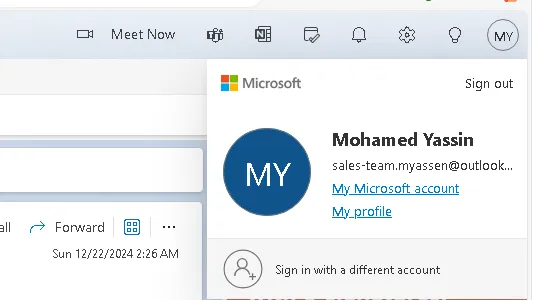
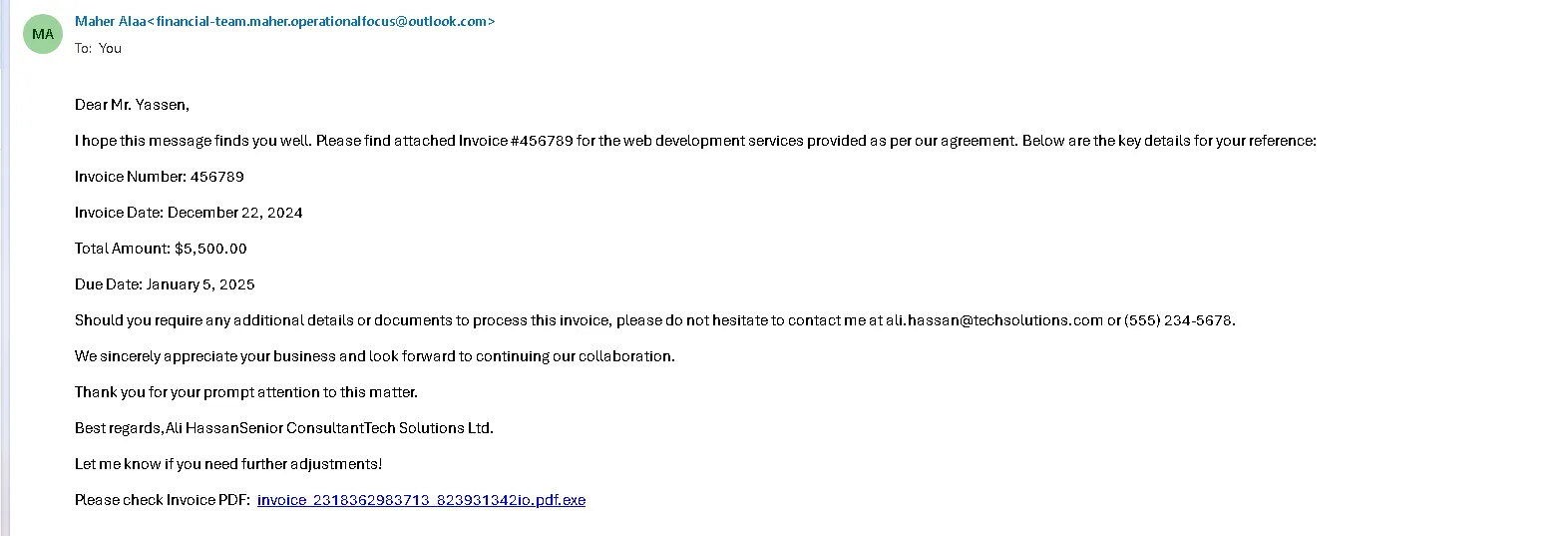 Invoice Notes
Invoice Notes
- pdf extension manipulation using double extension technique
- Abusing Microsoft Collaboration Tools (OneDrive) by Hosting on it
https://onedrive.live.com/cid=153FC99CB596A0A2&id=153FC99CB596ADA29621s2df3d182e1c467a810bSaSbddf8f043&parld=153FC99CB596ADA2%21s3d8648ccSef34f2598d772f44d152Bae&e=OneUp
Compromised Host Info
| HostName | IP | Domain | User |
|---|---|---|---|
| COM10 | 192.168.1.10 | RedAD19.lab | student |
Incident Summery
Some Alert Hit on Suricata Customized Zeus Rules
Alerts Related to Suspicious DNS ,Http Requests Query to suspicious IP
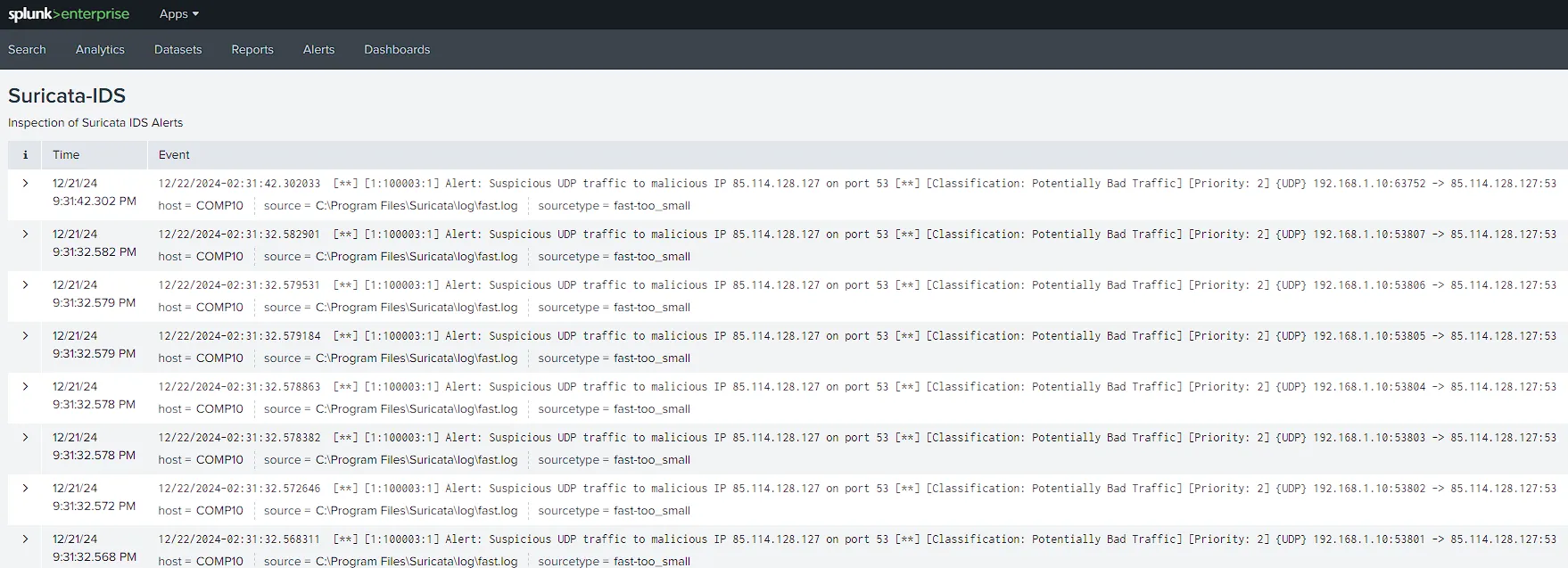
Starting Investigation to find Initiative Process
- Using Sysmon we start Investigation on
Process CreateEvent but within 40 min time range of execution - Showed Only Image Names Executed to Ease the Process
index = "main" hast-"COHP10" earliest =- 4am latest =- 10m | where match(SourceName, "Sysman") | where match(Message, "Pracess Create") | rare limit-20 Inage
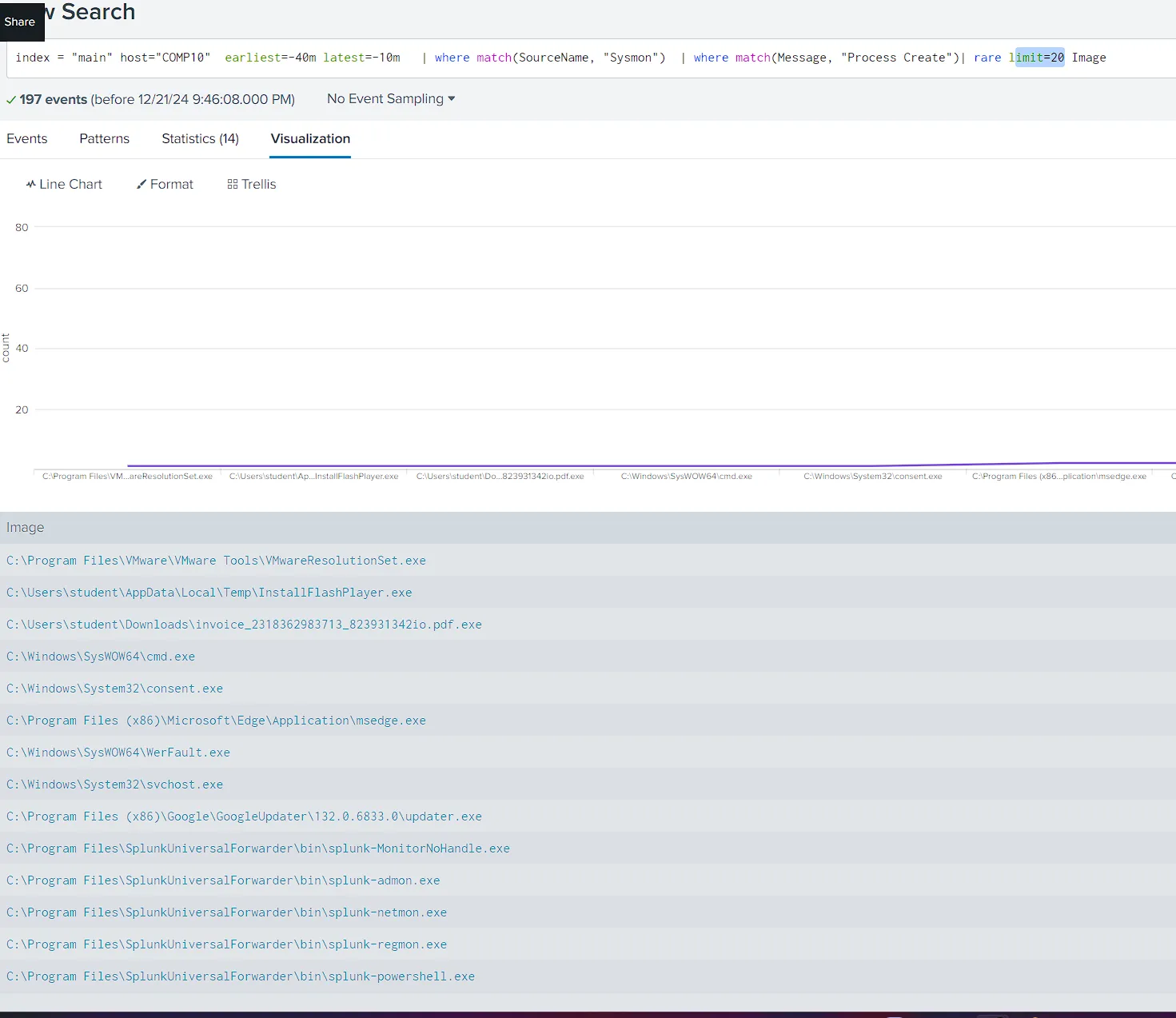
- We Found Some Suspicious process using double extension naming technique which is IOA
C:\Users\student\Downloads\invoce_2318362983713_823931342io.pdf.exe - tracking all events for that process
- Query
index = "main" host="COMP10" earliest =- 40m latest =- 10m |
match(Sourcellane, "Sysmon") | where match(Image, "pdf.exe")
- Result
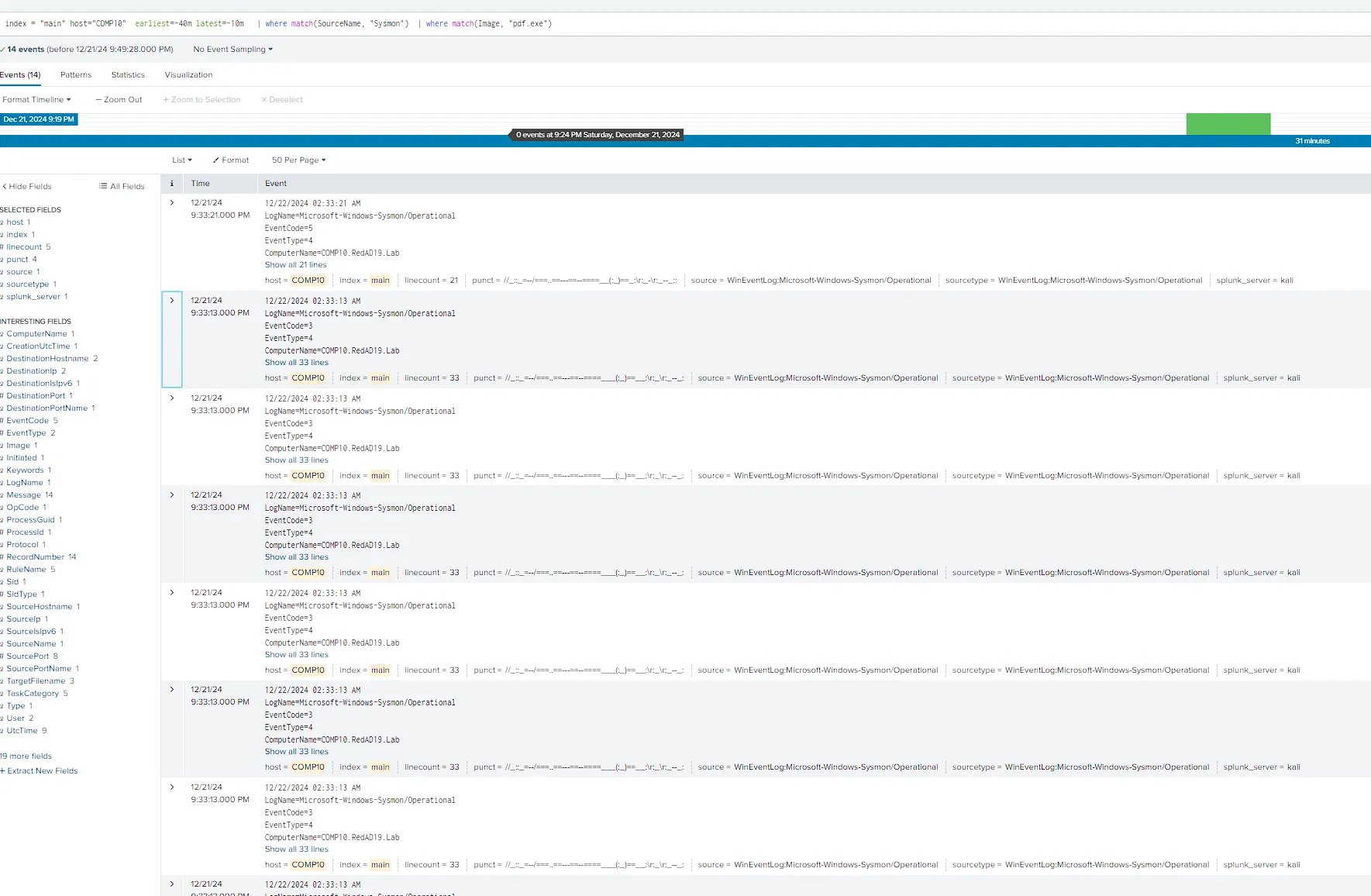
Investigation Findings
Network Investigation
-
Observed DNS Connection to IP
85.114.128.127from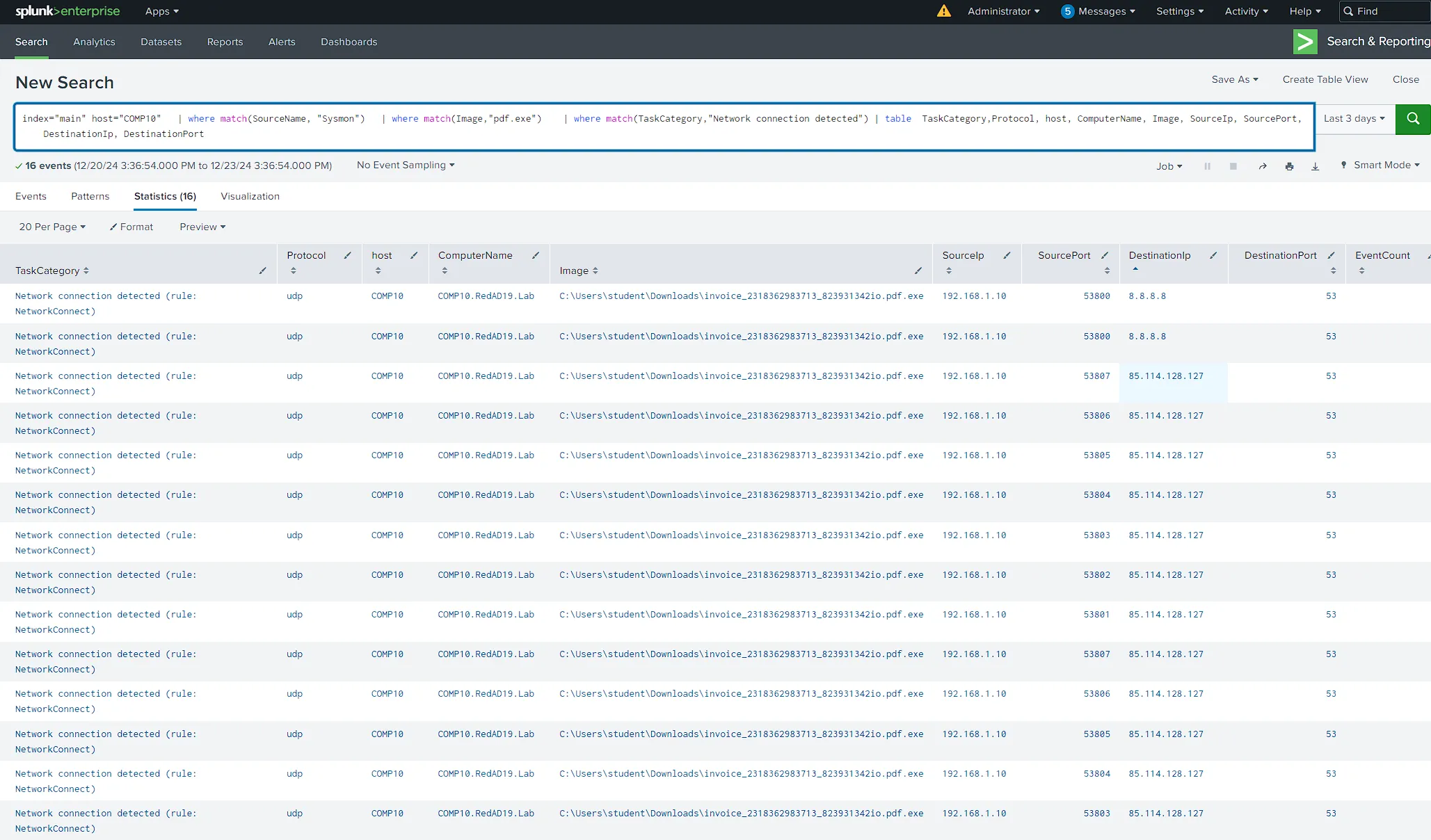
-
Search IP on ThreatIntel
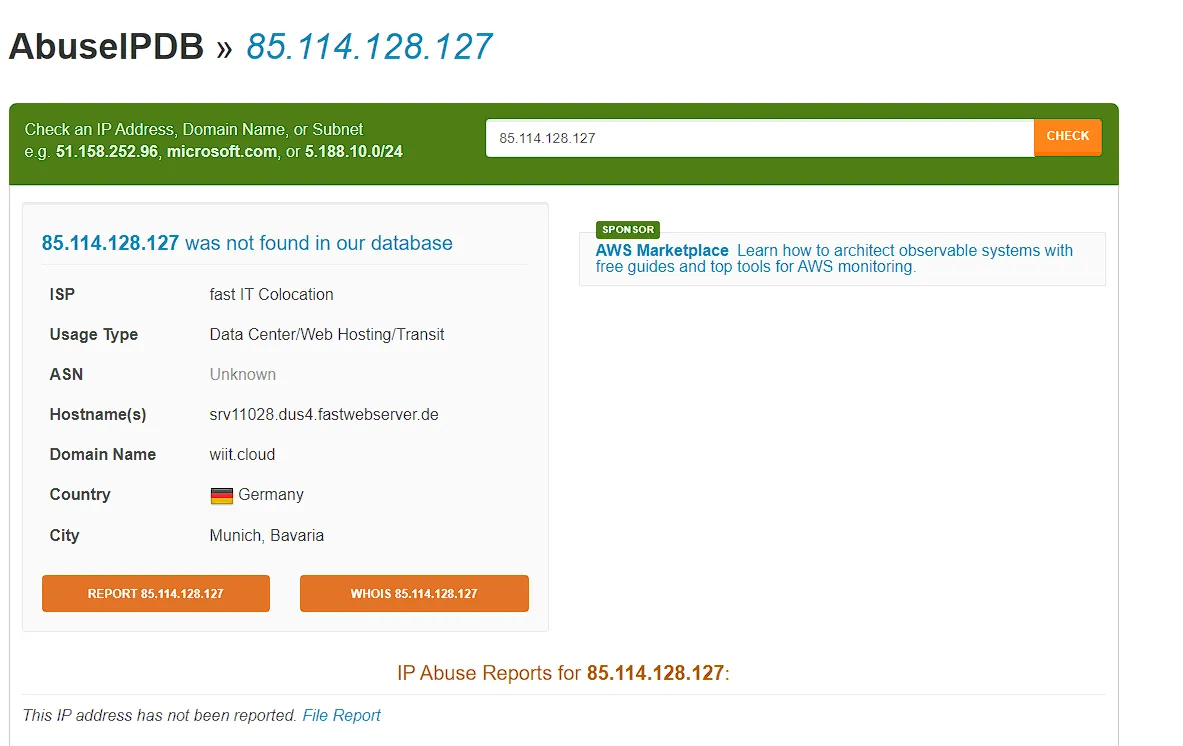
Endpoint Investigation
-
Processes Information
-
SEIM Query
index="main" host="COMP10" | where match(SourceName, "Sysmon") | search "pdf.exe" | search TaskCategory!="Network connection detected (rule: NetworkConnect)" | rex field=Hashes "MD5=(?<MD5>[a-fA-F0-9]{32})" | table TaskCategory, host, ComputerName, Image, ProcessId, CommandLine, ParentProcessId, ParentCommandLine, MD5, TargetFilename, TargetObject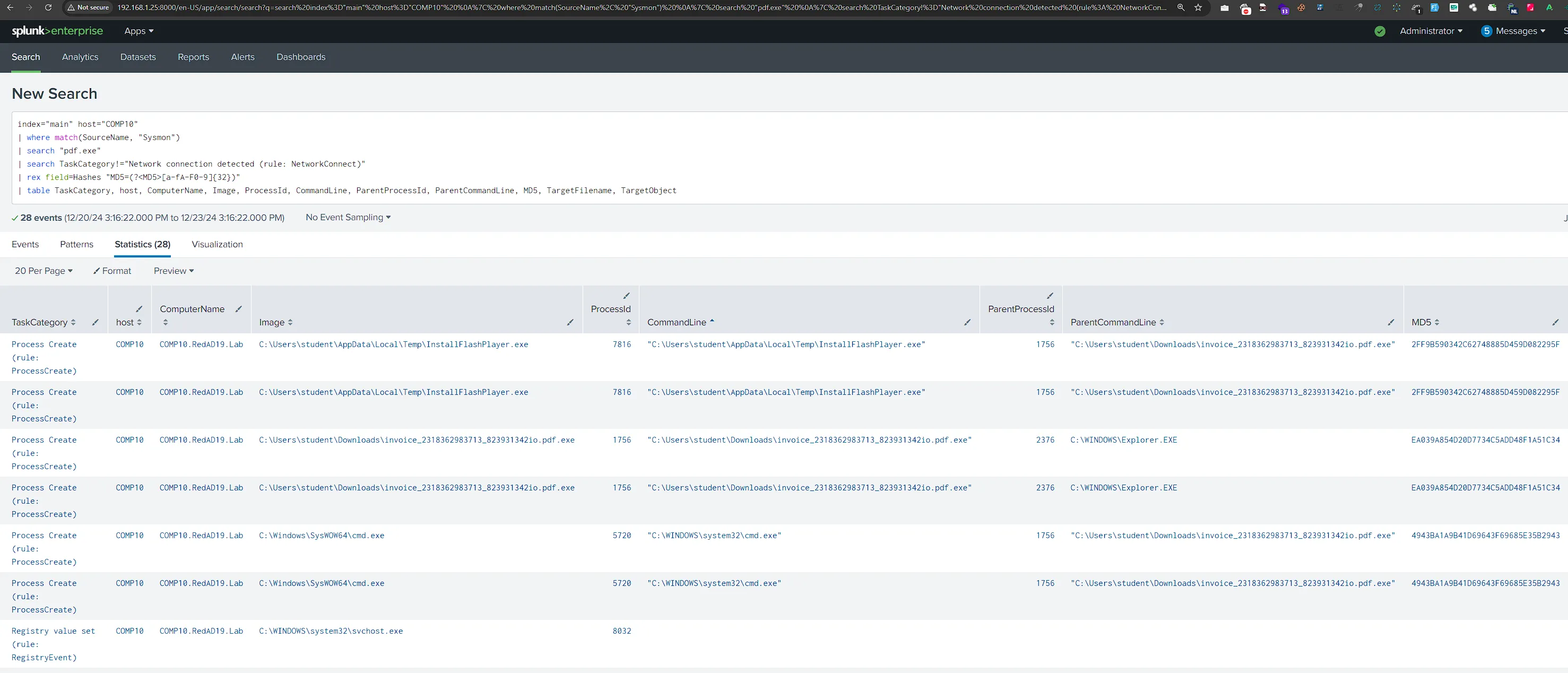
-
Processes Tree
explorer.exe>invoice_2318362983713_823931342io.pdf.exe >cmd.exe,InstallFlashPalyer.exeinvoice_2318362983713_823931342io.pdf.exeProcess ID: 1756Parent ProcessC:\Windows\explorer.exeParent ID2376File PathC:\Users\student\Downloads
invoice_2318362983713_823931342io.pdf.exeFile Hash: EA039A854D20D7734C5ADD48F1A51C34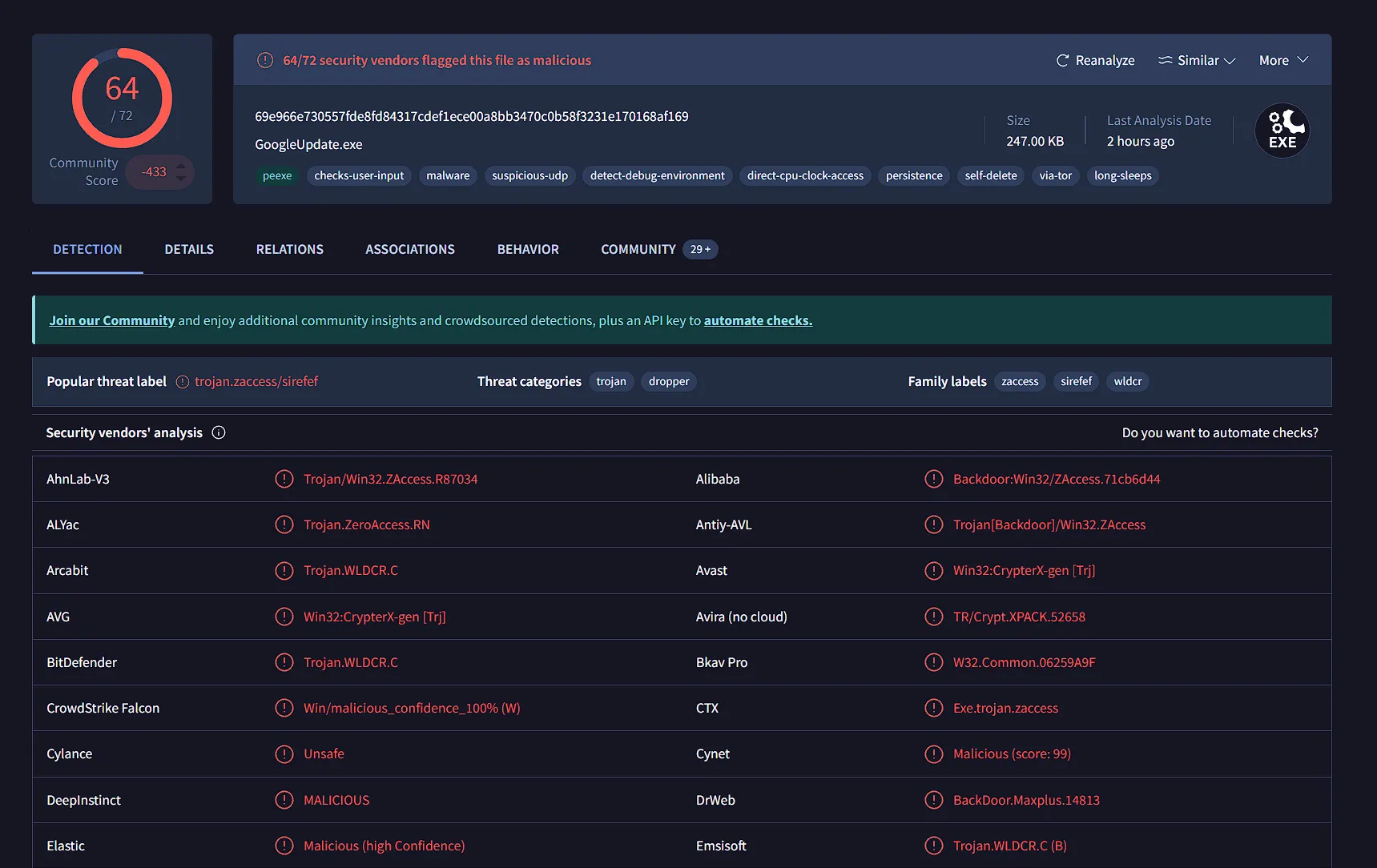 InstallFlashPalyer.exe
InstallFlashPalyer.exe
Process ID 77816Parent ProcessC:\Users\student\Downloads
invoice_2318362983713_823931342io.pdf.exeParent ID1756File PathC:\Users\student\AppData\Local\Temp
InstallFlashPlayer.exeFile Hash: 2FF9B590342C62748885D459D082295F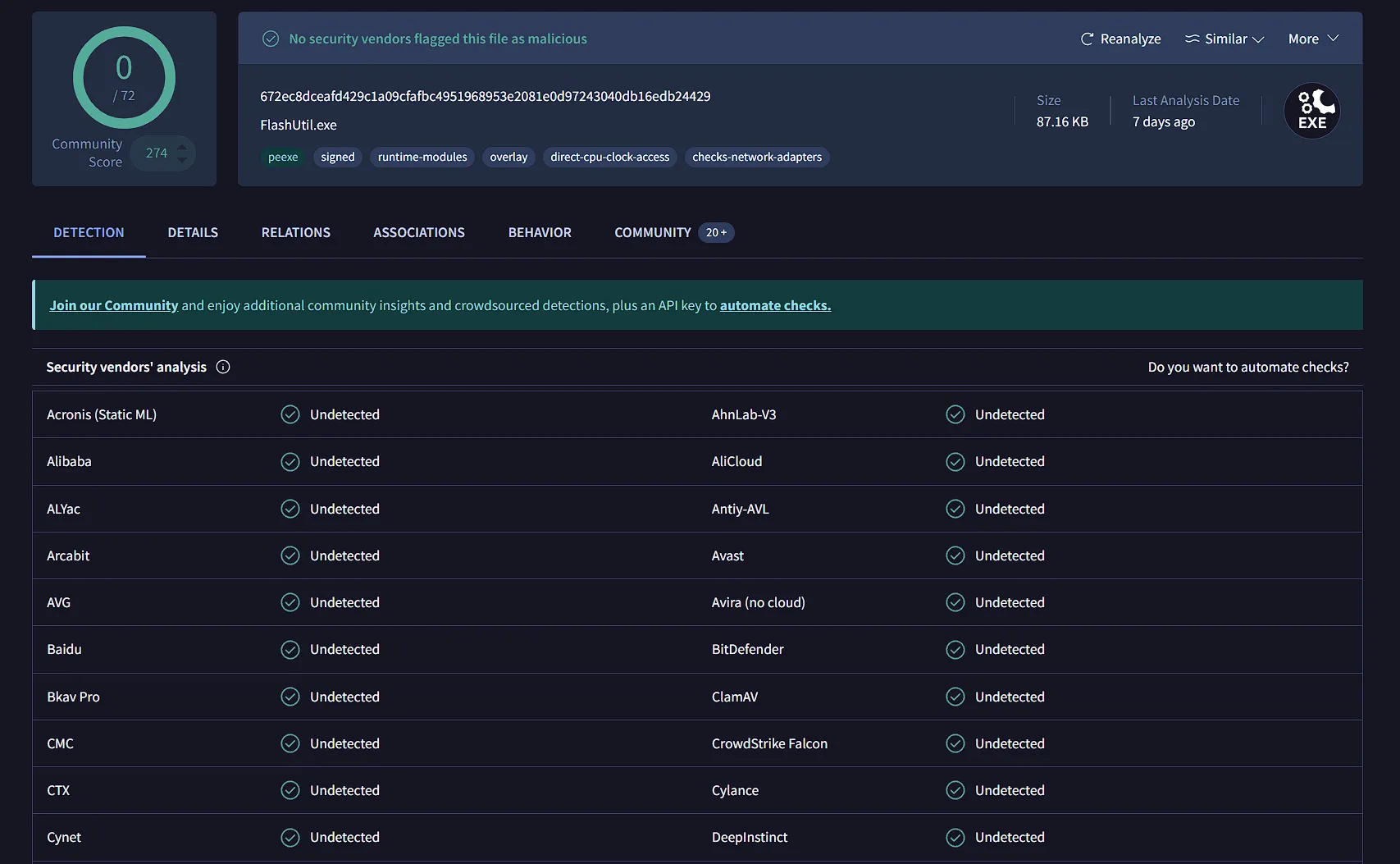
Reputation
-
-
Process Activities
-
Created Files
index="main" host="COMP10" | where match(SourceName, "Sysmon") | search "pdf.exe" | search TaskCategory!="Network connection detected (rule: NetworkConnect)" | rex field=Hashes "MD5=(?<MD5>[a-fA-F0-9]{32})" | table TaskCategory, host, ComputerName,Image,ProcessId,TargetFilename,TargetObject,MD5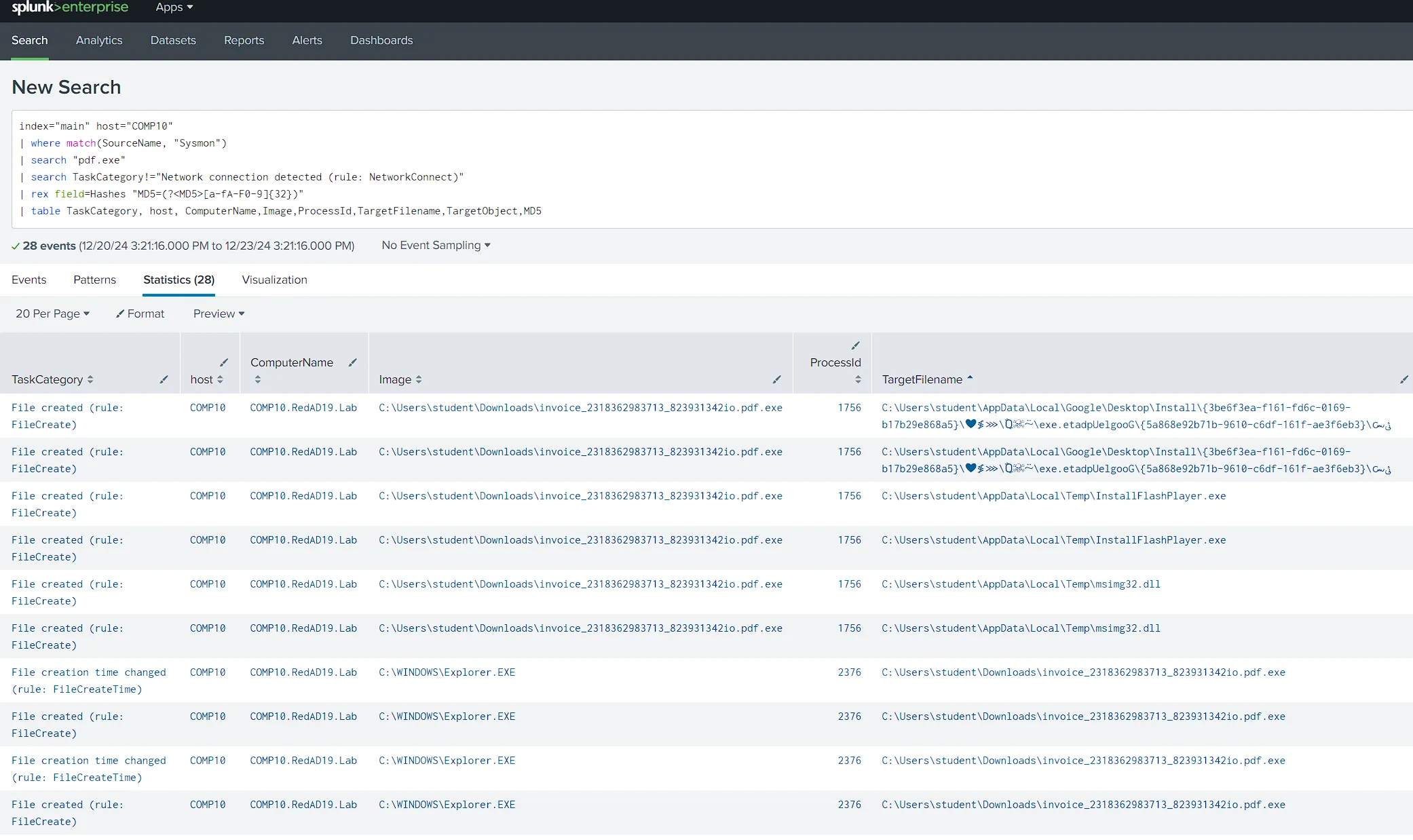
-
Created Regs
index="main" host="COMP10" | where match(SourceName, "Sysmon") | search "pdf.exe" | search TaskCategory!="Network connection detected (rule: NetworkConnect)" | rex field=Hashes "MD5=(?<MD5>[a-fA-F0-9]{32})" | table TaskCategory, host, ComputerName,Image,ProcessId,TargetFilename,TargetObject,MD5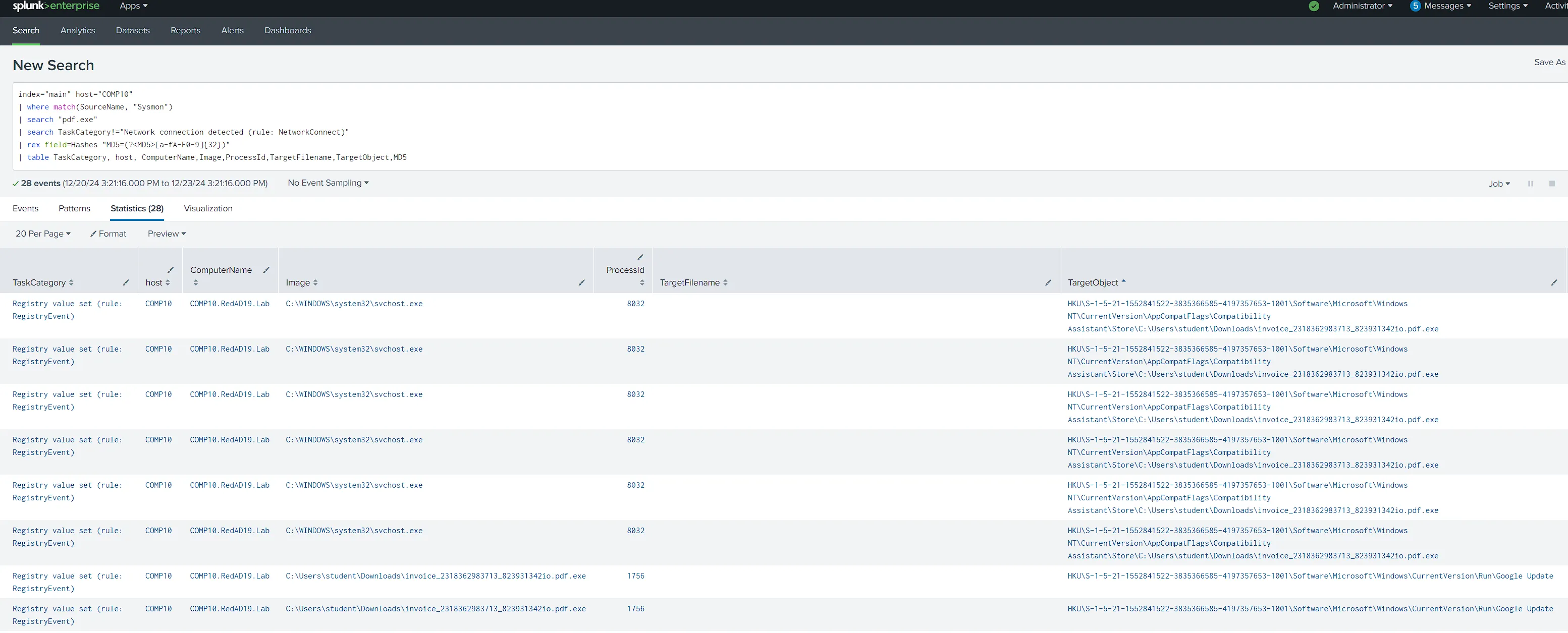
Created Files
Process invoice_2318362983713_823931342io.pdf Process ID : 1756
C:\Users\student\AppData\Local\`Google\Desktop\Install{3be6f3ea-f161-fd6c-0169-b17b29e868a5}\❤≸⋙\Ⱒ☠⍨\ﯹ๛{3be6f3ea-f161-fd6c-0169-“b17b29e868a5}\GoogleUpdate.ex|C:\Users\student\AppData\Local\Temp\InstallFlashPlayer.exeC:\Users\student\AppData\Local\Temp\msimg32.dllCreated Registries
Process svchost.exe Process ID : 8032
HKU\S-1-5-21-1552841522-3835366585-4197357653-1001\Software\Microsoft\WindowsNT\CurrentVersion\AppCompatFlags\CompatibilityAssistant\Store\C:\Users\student\Downloads\invoice_2318362983713_823931342io.pdf.exeHKU\S-1-5-21-1552841522-3835366585-4197357653-1001\Software\Microsoft\WindowsNT\CurrentVersion\ AppCompatFlags\CompatibilityAssistant\ Store\C:\Users \student\Downloads\invoice_2318362983713_823931342io.pdf.exe`HKU\S-1-5-21-1552841522-3835366585-4197357653-1001\Software\Microsoft\WindowsNT\CurrentVersion\ AppCompatFlags\CompatibilityAssistant\Store\ C:\Users\student\Downloads \invoice_2318362983713_823931342io.pdf.exe
HKU\S-1-5-21-1552841522-3835366585-4197357653-1001\Software\Microsoft\WindowsNT\CurrentVersion\ AppCompatFlags\CompatibilityAssistant\Store\C:\Users \student\Downloads\invoice_2318362983713_823931342io.pdf.exeHKU\S-1-5-21-1552841522-3835366585-4197357653-1001\ Software\Microsoft\ WindowsNT\CurrentVersion\AppCompatFlags\ CompatibilityAssistant\Store\C:\Users\student \Downloads\invoice_2318362983713_823931342io.pdf.exeProcess invoice_2318362983713_823931342io.pdf.exe Process ID : 1756
HKU\S-1-5-21-1552841522-3835366585-4197357653-1001\Software\Microsoft\Windows\ CurrentVersion\Run\Google UpdateHKU\S-1-5-21- 1552841522-3835366585-4197357653-1001\Software\ Microsoft\Windows\CurrentVersion\Run\Google Update
-
Analysis Highlights
- Very Low Amount of Traffic successful no reverse shell
- Downloads\ location means File Downloaded By the User
- explorer.exe parent means Executed By User
- Registries Created by svchost.exe IOA of Process Injection
TTP Time Line
| Tactic | Technique | Procedure/Activity | Detection Methods | Mitigation Actions |
|---|---|---|---|---|
| Reconnaissance | Abuse MS Collaboration Tools | Phishing email with a malicious file attachment hosted via OneDrive. | Not Detected | - Implement advanced email filtering. - Train users on identifying phishing emails. |
| Delivery | Spearphishing Attachment | Malicious file (xxxpdf.exe) disguised as a legitimate document. | Not Detected | - Use endpoint protection solutions that block known malware. - Educate users to avoid unknown files. |
| Execution | User Execution | User executes the malicious file, initiating the payload. | - Monitor for new process creation from unusual file paths. using Sysmon logs, Splunk). | - Restrict execution of non-whitelisted files. - Limit privileges of user accounts. |
| Command and Control (C2) | Malicious DNS Requests | Malware queries external malicious domains for communication. | - Suricata Integration DNS logs | - Implement DNS filtering solutions. - Block access to known malicious domains. |
| Execution | Ingress Tool Transfer- Dropping Executable File | Malware downloads additional payloads or scripts. | Not Detected | - Block access to non-approved repositories. - Implement network-based intrusion prevention. |
| Defense Evasion | Process Injection | Injects into svchost.exe to evade detection and blend into legitimate activity. | - Monitor for unusual memory usage or thread injections in svchost.exe.using Sysmon logs, Splunk). | - Enable Credential Guard and modern Windows protections. - Investigate anomalies in high-privileged processes. |
| Discovery | - Query Registry -System Information Discovery | Not Detecetd | Anomalous Behavior Detection and Analysis Application Whitelisting Privileged Account Management | |
| Persistence | Registry Modification | Malware establishes persistence by creating or modifying registry keys. | - Registry monitoring for unusual changes (e.g., Sysmon logs, Splunk). | - Regularly audit registry keys. - Use tools to lock down critical registry paths. |
Incident & Response Process
Preparation (Done)
This step involves setting up processes, tools, and resources to ensure an organization can effectively respond to incidents.
- Develop and document an Incident Response Plan (IRP).
- Establish an Incident Response Team (IRT) with defined roles and responsibilities.
- Deploy and configure security tools like SIEMs, EDRs, and firewalls.
- Train staff with cybersecurity awareness and conduct regular incident response drills (e.g., tabletop exercises).
- Maintain an updated inventory of critical assets and their associated risks.
- Develop playbooks for common attack scenarios (e.g., phishing, ransomware, data breaches).
Identification (Done)
In this phase, we detect and confirm potential security incidents by analyzing alerts, logs, and behaviors.
- Monitor systems and networks using tools like SIEM, IDS/IPS, and endpoint security tools.
- Analyze alerts and anomalies to confirm if an incident is occurring.
- Gather forensic data, including logs, system snapshots, and network traffic.
- Classify and prioritize the incident based on its severity, impact, and type (e.g., phishing, ransomware).
Containment
This step focuses on stopping the spread of the attack and limiting its damage.
-
Short-term containment: Isolate affected systems (e.g., unplug from the network, disable accounts). via EDR / Live Response
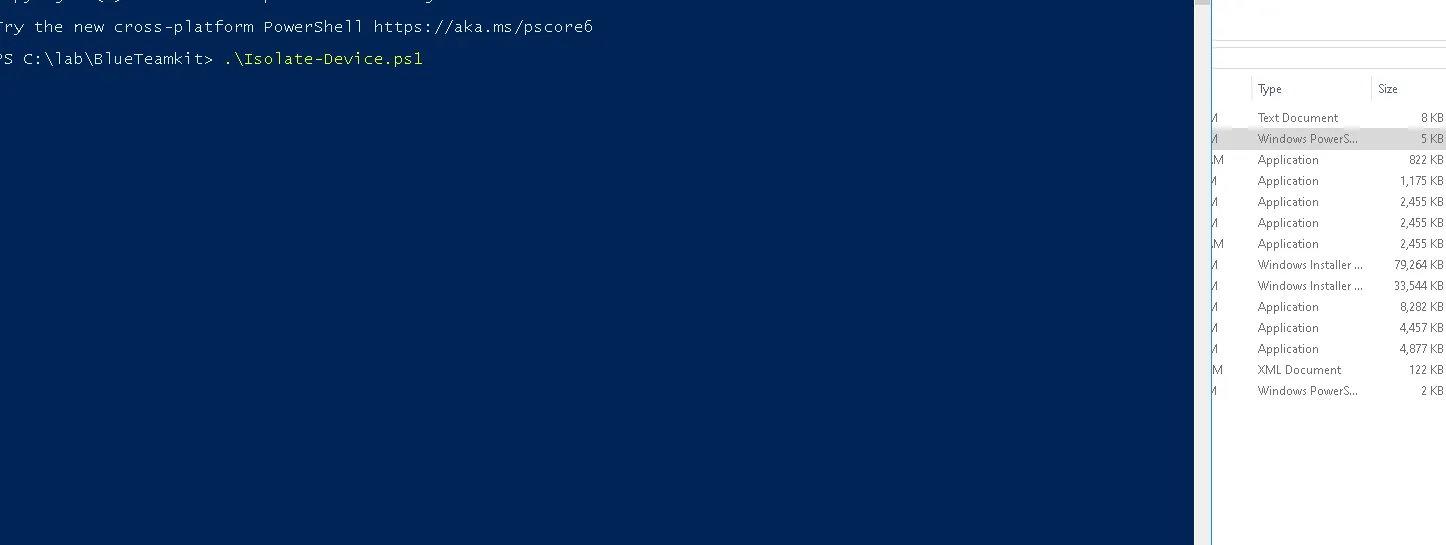
-
Long-term containment: Set up temporary solutions, such as deploying new firewalls or network segments.
-
Block malicious domains, IPs, and email addresses in firewalls or DNS settings. Here We Don’t Need Logging Utils such sysmon,suricata We Need Action Utils Instead of NDR,IPS Will Use Windows Firewall Rules
`New-NetFirewallRule -DisplayName “Block Outbound Traffic to $ip” -Direction Outbound -RemoteAddress “85.114.128.127” -Action Block -Protocol AnyNew-NetFirewallRule -DisplayName "Block Inbound Traffic from $ip" -Direction Inbound -RemoteAddress "85.114.128.127" -Action Block -Protocol AnyInstead of EDR Will Use WindowsAV RulesAdd-MpPreference -ThreatIDDefaultAction_Actions 2 -ThreatIDDefaultAction_Ids EA039A854D20D7734C5ADD48F1A51C34 -
Implement patches or workarounds to prevent further exploitation.
-
Preserve evidence for further investigation (e.g., disk images, memory dumps).
Eradication
In this phase, you remove the threat from your environment to prevent further compromise.
- Identify and remove malware, backdoors, or malicious files.
- Patch exploited vulnerabilities in systems, software, or configurations.
- Scan systems thoroughly to ensure no remnants of the attack remain.
- Harden systems and networks against similar attacks in the future.
Recovery
The goal of this step is to restore normal operations while ensuring the environment is secure.
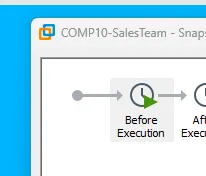
- Rebuild or restore affected systems from clean backups.
- Verify that all systems are functioning properly and securely.
- Monitor systems closely for any signs of lingering threats.
- Gradually reintroduce affected systems to the network.
Incident Analysis (Digital Forensics )
Short Malware Analysis Hands-On
| For Emulation will Use Public tools
Static Malware Analysis
File Information
Name :invoice_2318362983713_823931342io.pdf.exeHash:69e966e730557fde8fd84317cdef1ece00a8bb3470c0b58f3231e170168af169`- Reputation 64/72
- Signature : Not Signed
History
| Creation Time | 2013-11-25 10:32:03 UTC |
|---|---|
| First Seen In The Wild | 2019-07-10 23:59:42 UTC |
| First Submission | 2013-11-25 17:21:04 UTC |
PE Info
| Magic | PE32 executable (GUI) Intel 80386, for MS Windows |
|---|---|
File type | Win32 EXE |
TrID | Win32 Executable MS Visual C++ (generic) (47.3% |
| Target Machine | Intel 386 or later processors and compatible processors |
Dropped Files
| Scanned Date | Detections | File Type | Name | SHA-256 | File Size |
|---|---|---|---|---|---|
| 2022-07-02 | 51 / 68 | Win32 DLL | desktop.ini | 00e3d0987b2edd740f1dcbbfb5adaa987d96312136aaa0b16c351de3a5d643e4 | - |
| 2020-09-23 | 59 / 70 | Win32 DLL | 1x32.dll | 315387a3e83aae9a667b82635b26a4d8576887887732239422d63e0f964ca17b | 5.50 KB |
| - | - | - | - | 68ba25c6623b40c2a9cd9fbbcdcabd2328d7bca1862b0039b5ee53541d91d7fe | - |
| 2024-12-24 | 64 / 72 | Win32 EXE | invoice_2318362983713_823931342io.pdf.exe | 69e966e730557fde8fd84317cdef1ece00a8bb3470c0b58f3231e170168af169 | 247.00 KB |
| 2024-05-23 | 50 / 74 | Win32 DLL | x64.dll | 8c803f3de87cf264f09ae57b4eb86a7c87b9a0a7da995a8803ef77ffd0884782 | - |
| - | - | - | - | 92d89ba74874f506a644576a35888f719eabaf92480cd0815042b544148dfca2 | 7.00 KB |
| - | - | - | - | a1b513a59a9a2ebf8cbf91f580bf50f91aee9ab88eeca6047ebf644f2a7dbdb3 | - |
Executable Sections
| Section Name | Virtual Address | Virtual Size | Raw Size | Entropy | MD5 |
|---|---|---|---|---|---|
.text | 4096 | 46449 | 46592 | 6.71 | 679fbf23d7317d8207d350b532908f0a |
.data | 53248 | 75953 | 76288 | 6.13 | 73fdae90c1738941b6afec633c45972e |
.itext | 131072 | 2125 | 2560 | 4.82 | 7f89ad170ffea80a9c7304edf9c7f32c |
.pdata | 135168 | 97470 | 97792 | 6.77 | a8448d1b94e56bc8f80ed852445884c1 |
.rsrc | 233472 | 22770 | 23040 | 6.14 | b3af18982aee2e1b39915237800c877e |
.reloc | 258048 | 5612 | 5632 | 6.44 | 37469a130e838cd467ff44551f2a43fb |
IAT Highlights
| DLL | Malicious Potential Imported APIs |
|---|---|
SHLWAPI.dll | PathCombineW, PathIsPrefixA, PathIsRelativeA, PathIsRootW, PathIsSameRootA, PathIsUNCServerA, PathMatchSpecW, PathRelativePathToW |
KERNEL32.dll | CreateFileMappingA, GetCurrentThread, FreeLibrary, GetCompressedFileSizeA |
USER32.dll | GetAsyncKeyState, SetLastErrorEx, SwapMouseButton, AllowSetForegroundWindow |
-
SHLWAPI.dll:
- Functions like
PathCombineW,PathIsPrefixA, andPathIsRelativeAcan be used for path manipulation, potentially targeting sensitive directories. - Functions such as
PathIsUNCServerAandPathMatchSpecWmay help attackers find and abuse network shares.
- Functions like
-
KERNEL32.dll:
CreateFileMappingAcan facilitate inter-process memory access, which attackers might use for injecting or sharing payloads.FreeLibraryandGetCurrentThreadcan manipulate thread contexts or remove modules dynamically.
-
USER32.dll:
- Functions like
GetAsyncKeyStatecan capture keystrokes. SwapMouseButtonandAllowSetForegroundWindowcan be used to manipulate the UI for phishing or evasion.
- Functions like
Dynamic Malware Analysis
Process
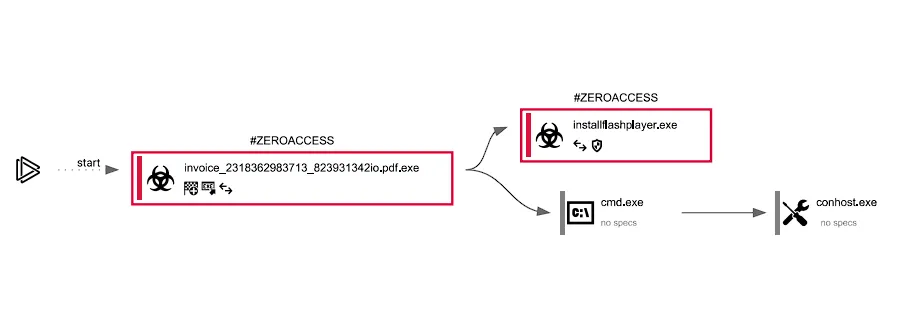
Process Activities

- Process Added to Sturup
- Network Connection
- Executable File Dropped

- Integrity Level Elevation
- Network Connection
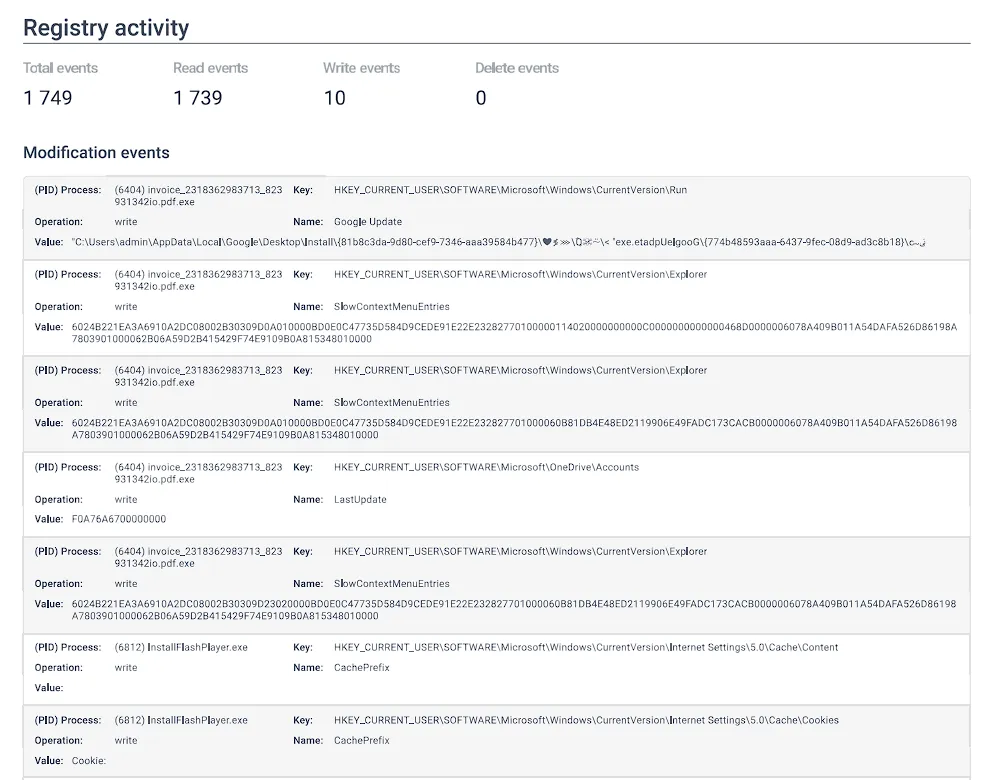
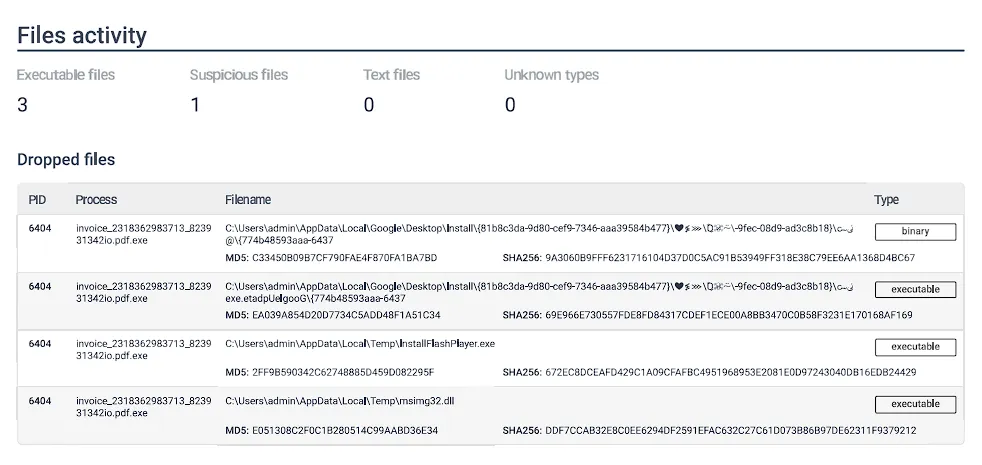
Process Connection
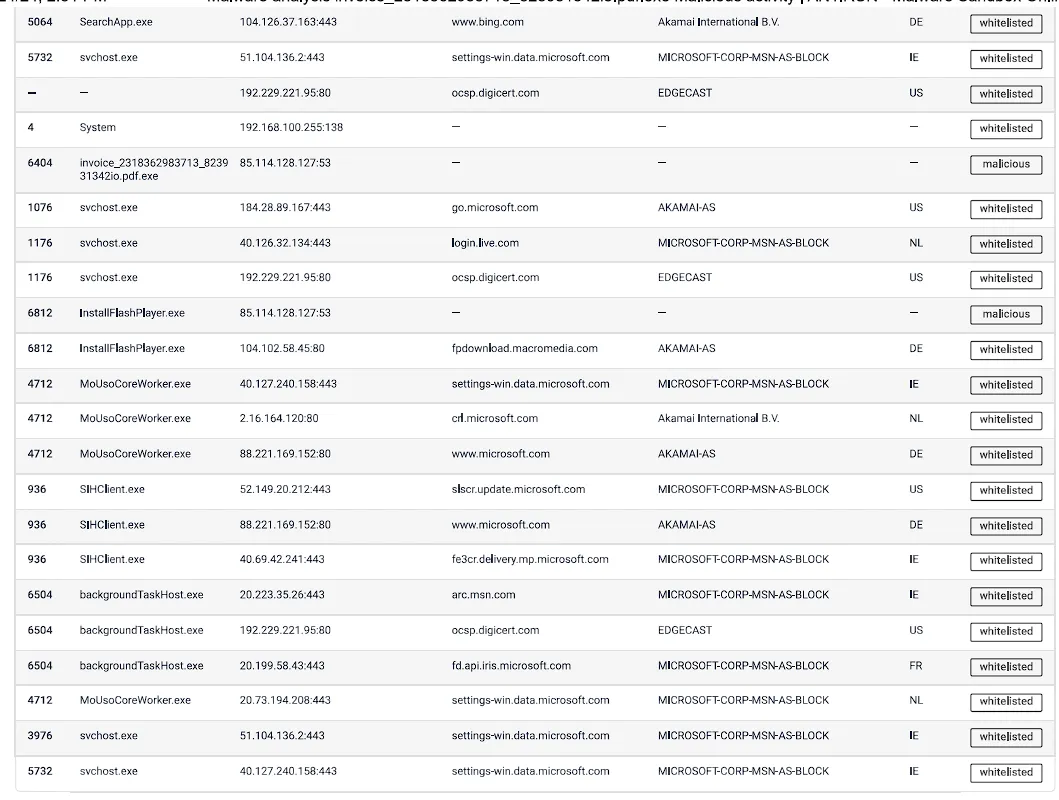
Network DNS Requests
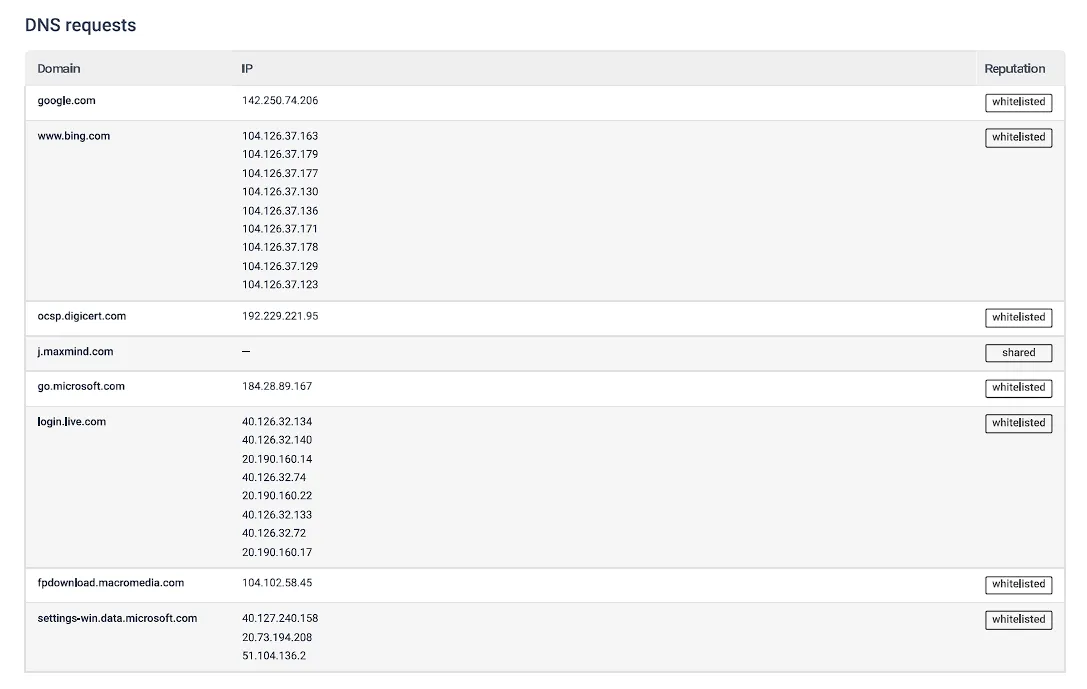

Network HTTP Requests
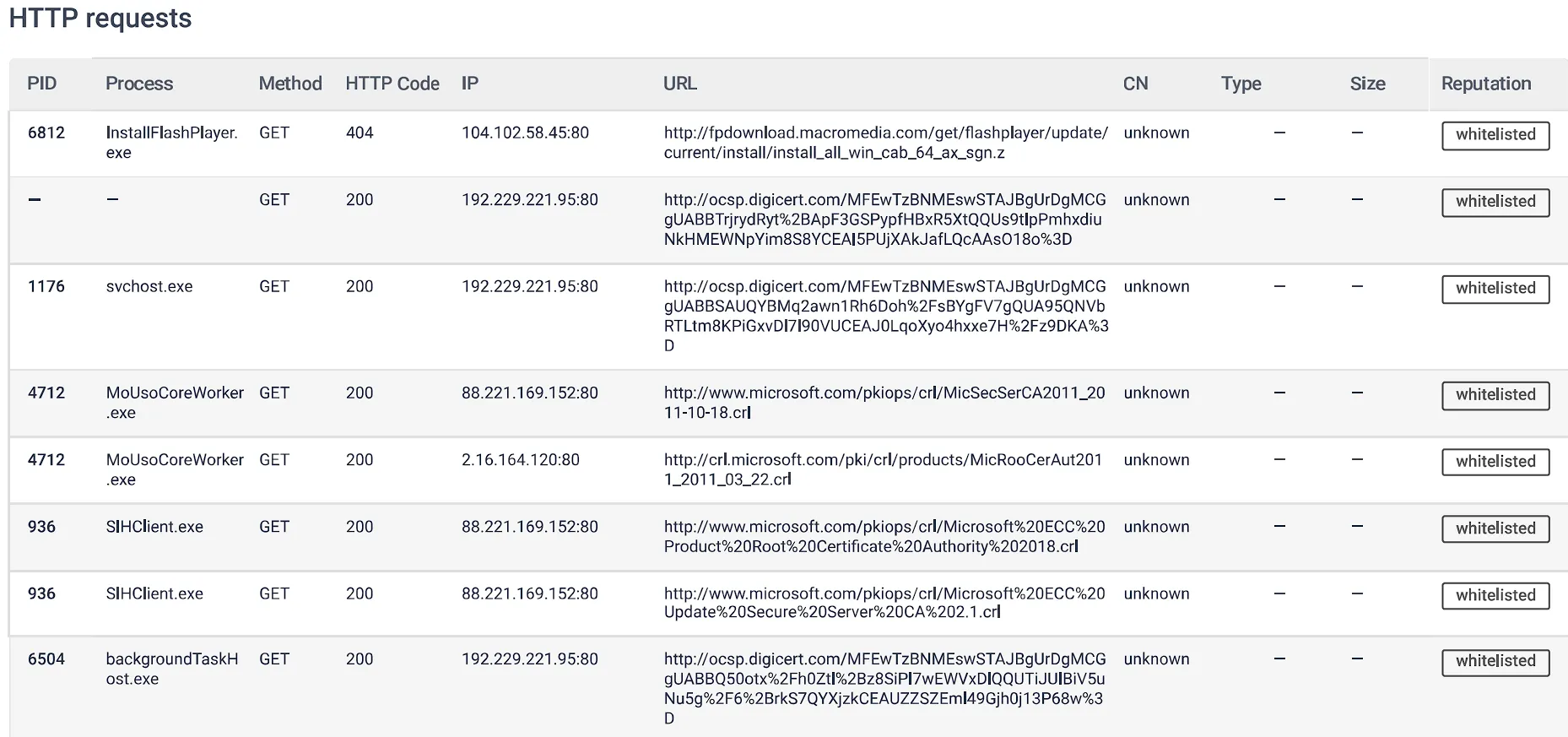
Short Endpoint Forensics Hands-On
Here We Will not Deepdive on All Forensics Lifecycle Just will Capture some Hints of Memory Forensics for demonstration
Memory Forensics
After Dumping memory
Using Volatility
Installation
pip install volatility3
Deep Dive in OS Information
Windows Image Info
sudo vol -f zeus2x4.vmem windows.info
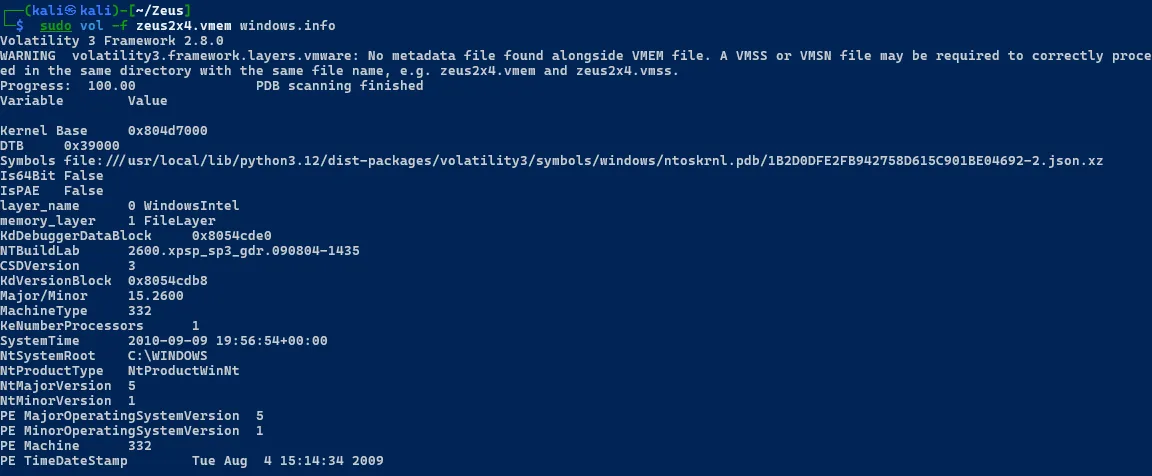
Listing All Assigned Security Privileges
sudo vol -f zeus2x4.vmem windows.privileges.Privs

Listing All Created Files
sudo vol -f zeus2x4.vmem windows.filescan.FileScan
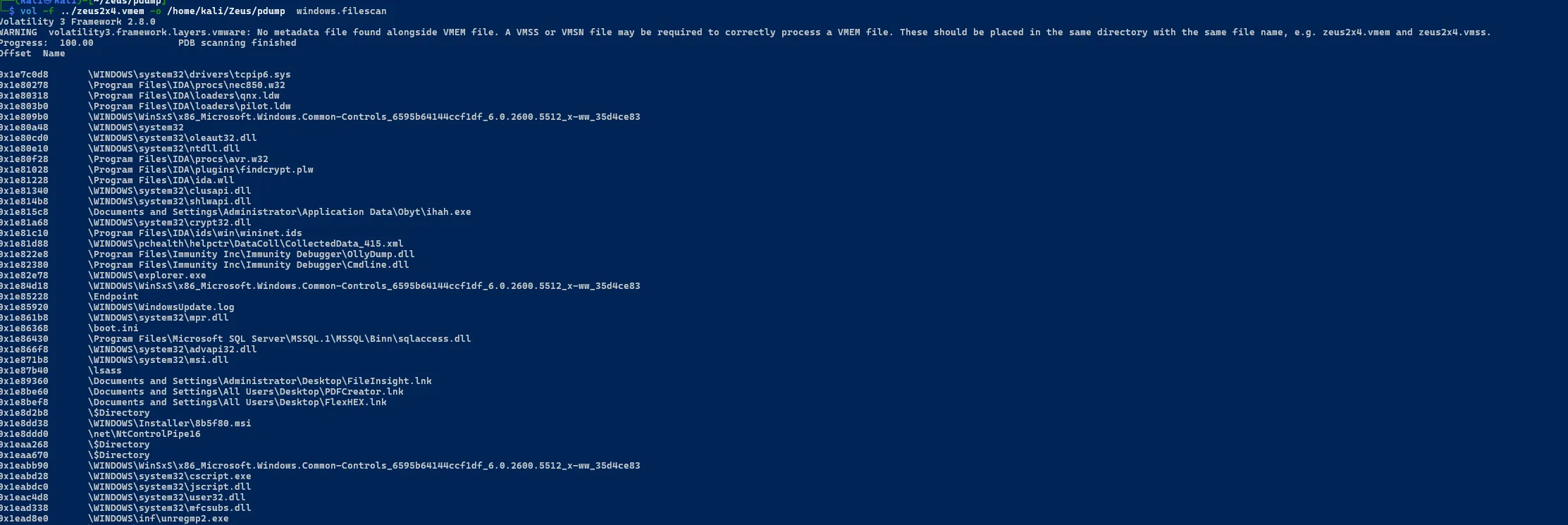
Listing All loaded Dlls
sudo vol -f zeus2x4.vmem windows.dlllist.DllList
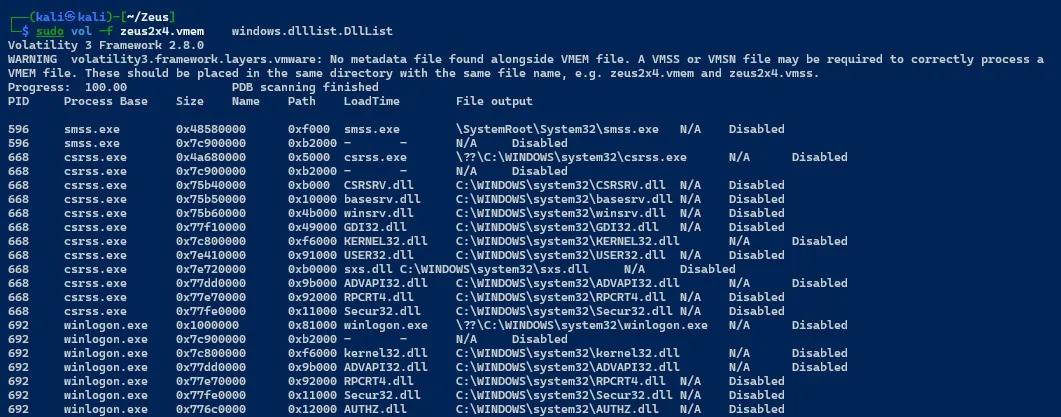 Listing all Running Services
Listing all Running Services
sudo vol -f zeus2x4.vmem windows.svcscan.SvcScan
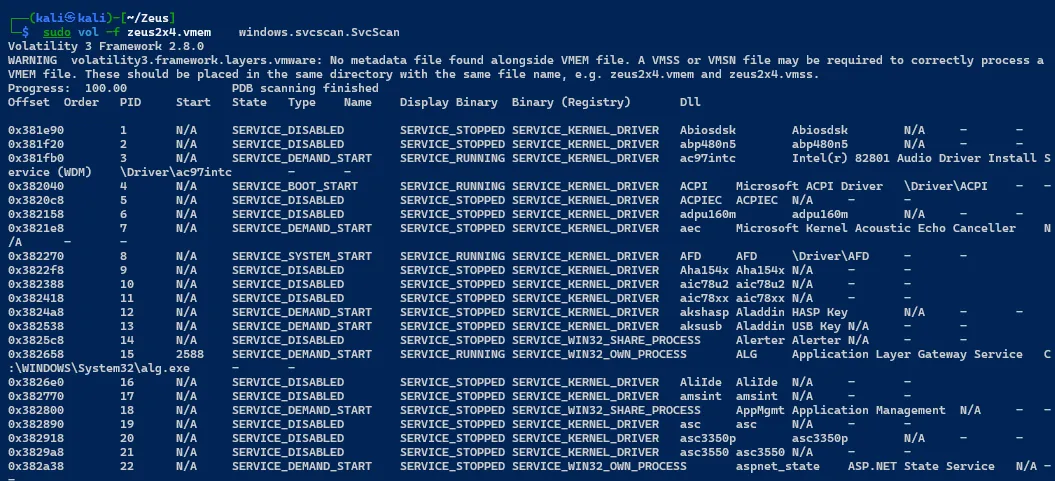 Listing All Loaded Drivers
Listing All Loaded Drivers
sudo vol -f zeus2x4.vmem windows.dricverscan.DriverScan
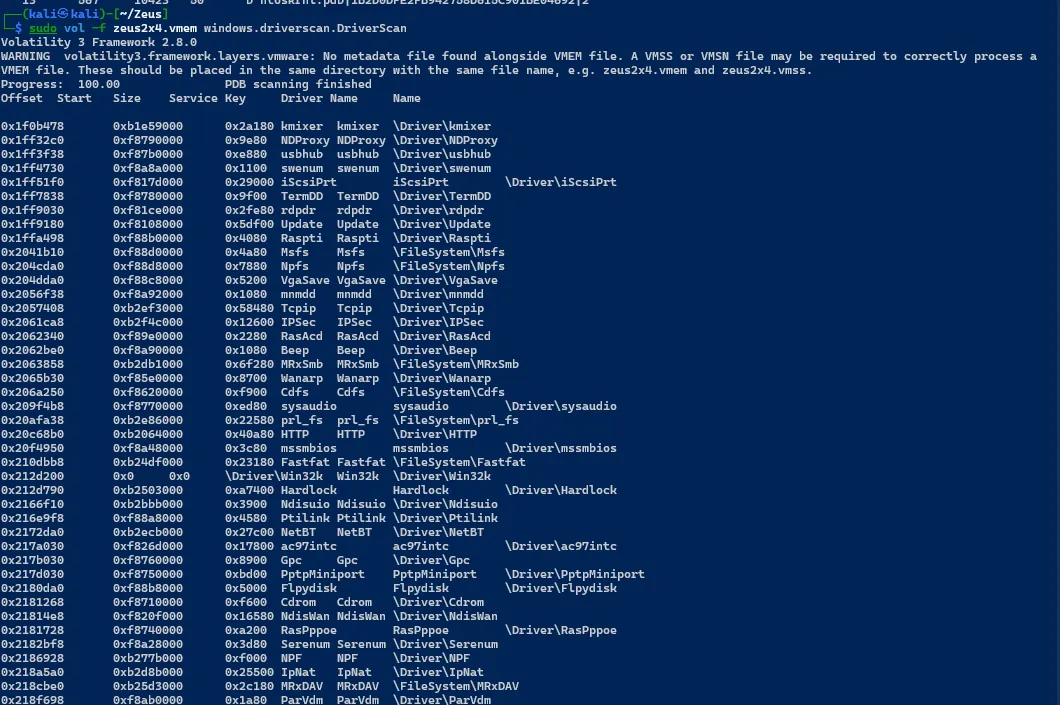
Get All Executed Processes
sudo vol -f zeus2x4.vmem windows.psscan.PsScan
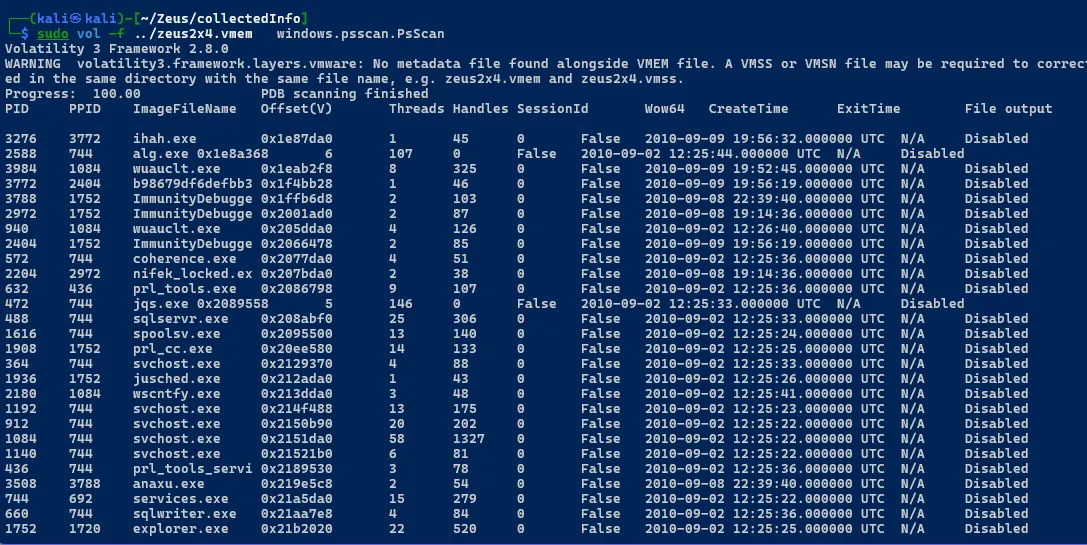
sudo vol -f zeus2x4.vmem windows.cmdline.Cmdline
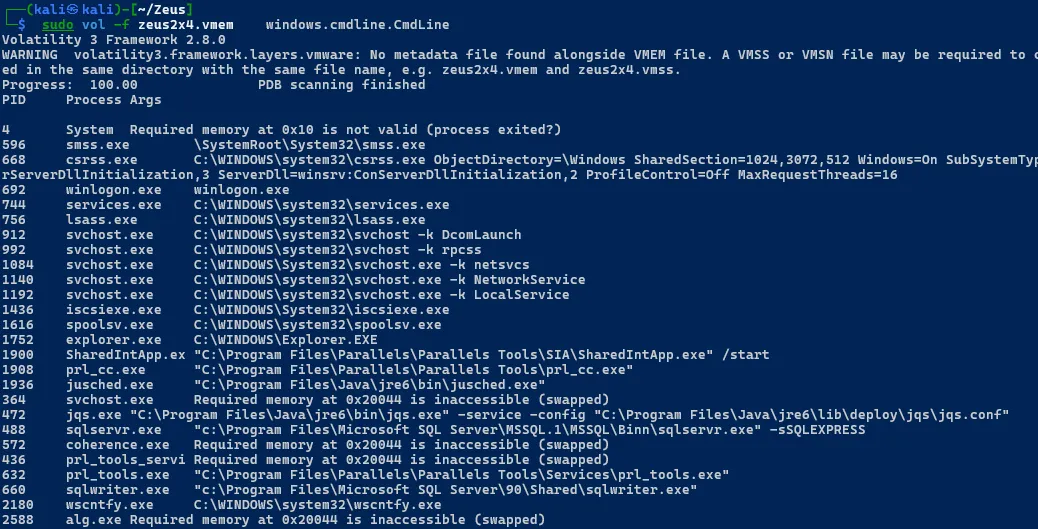
Get Detailed Process Tree
sudo vol -f zeus2x4.vmem windows.pstree.Pstree

Dumping Malicious process
sudo vol -f zeus2x4.vmem -o ./procdump windows.memmap.Memmap --pid 3276 --dump
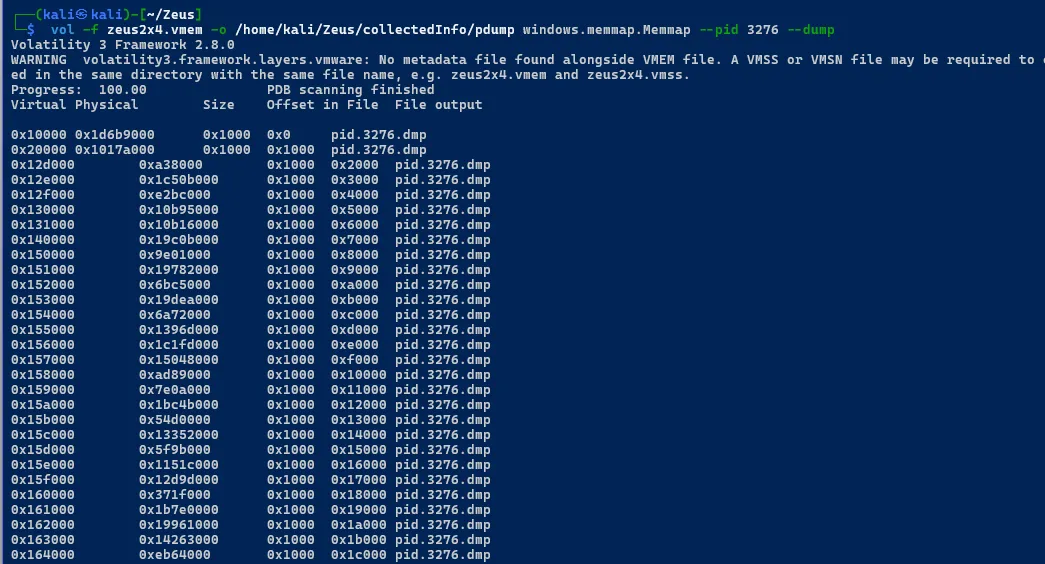
Dump Files of Malicious Process
sudo vol -f .. /zeus2x4.vmem -o /home/kali/Zeus/collectedInfo/procdump/ windows.dumpfiles --pid 3772

Malicious Memory Activity Checking
MalFind
sudo vol -f .. / .. /zeus2x4.vmem windows.malfind. Malfind
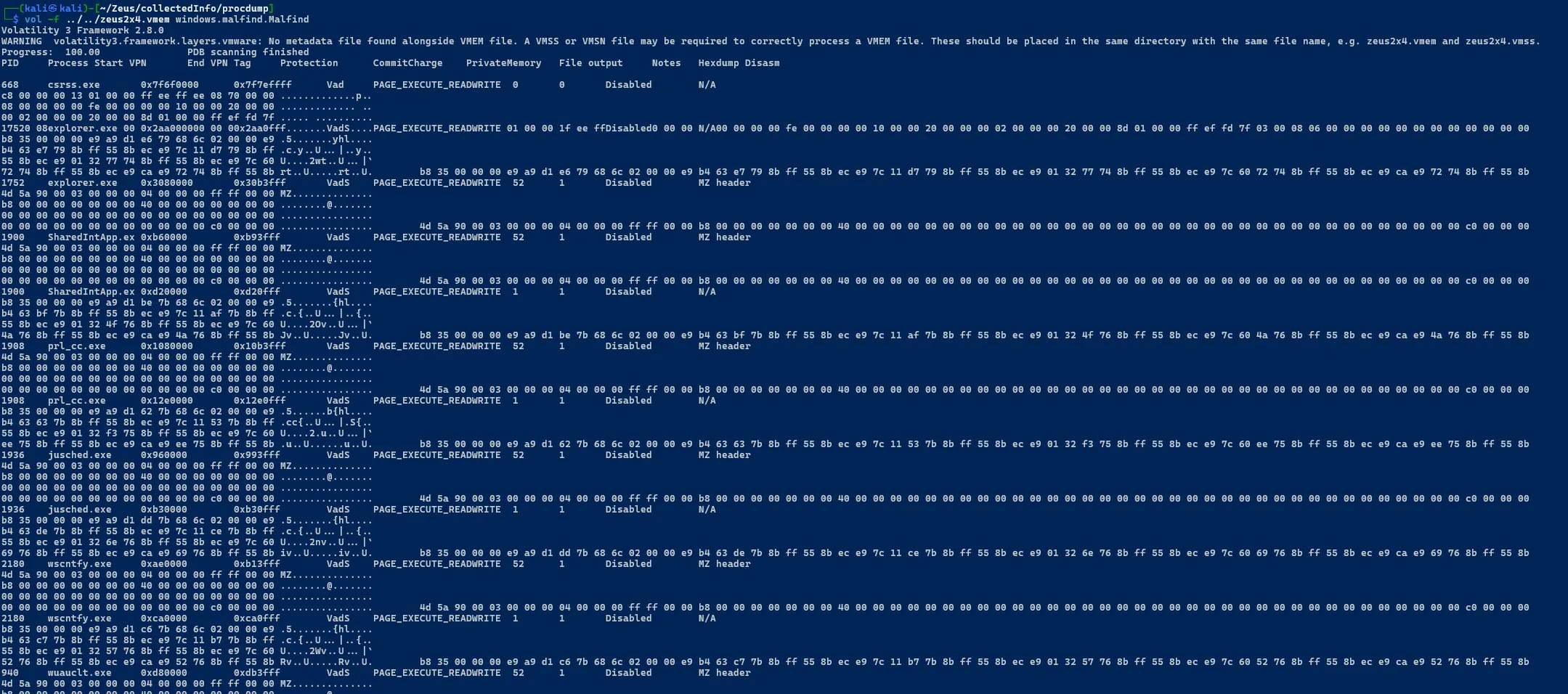 Process Hollow
Process Hollow
sudo vol -f zeus.vmem windows.hollowprocess.HollowProcess

SupsiciousThreads
sudo vol -f zeus2x4.vmem windows.suspicious_threads.SupsiciousThreads
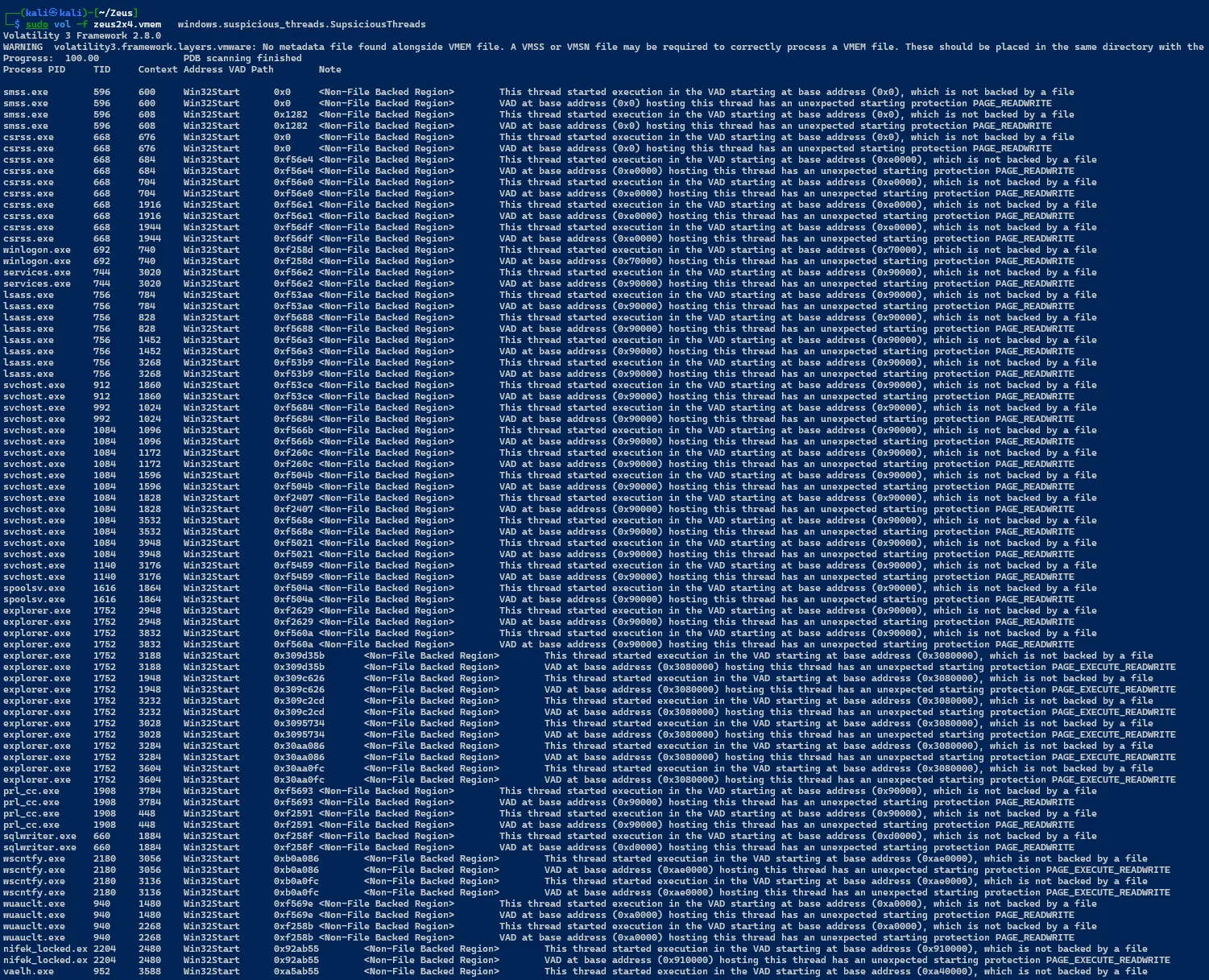
Threat Intelligence
Adding IOCs to your SOC DB
Generating New Rules
Using YarGen for Generating Rules and IOCs Based on Collected Evidences from Digital Forensics Process
python yargen.py -m /home/CollectedInfo/Zeus -o ../Zeus/Updated-IOC.rules
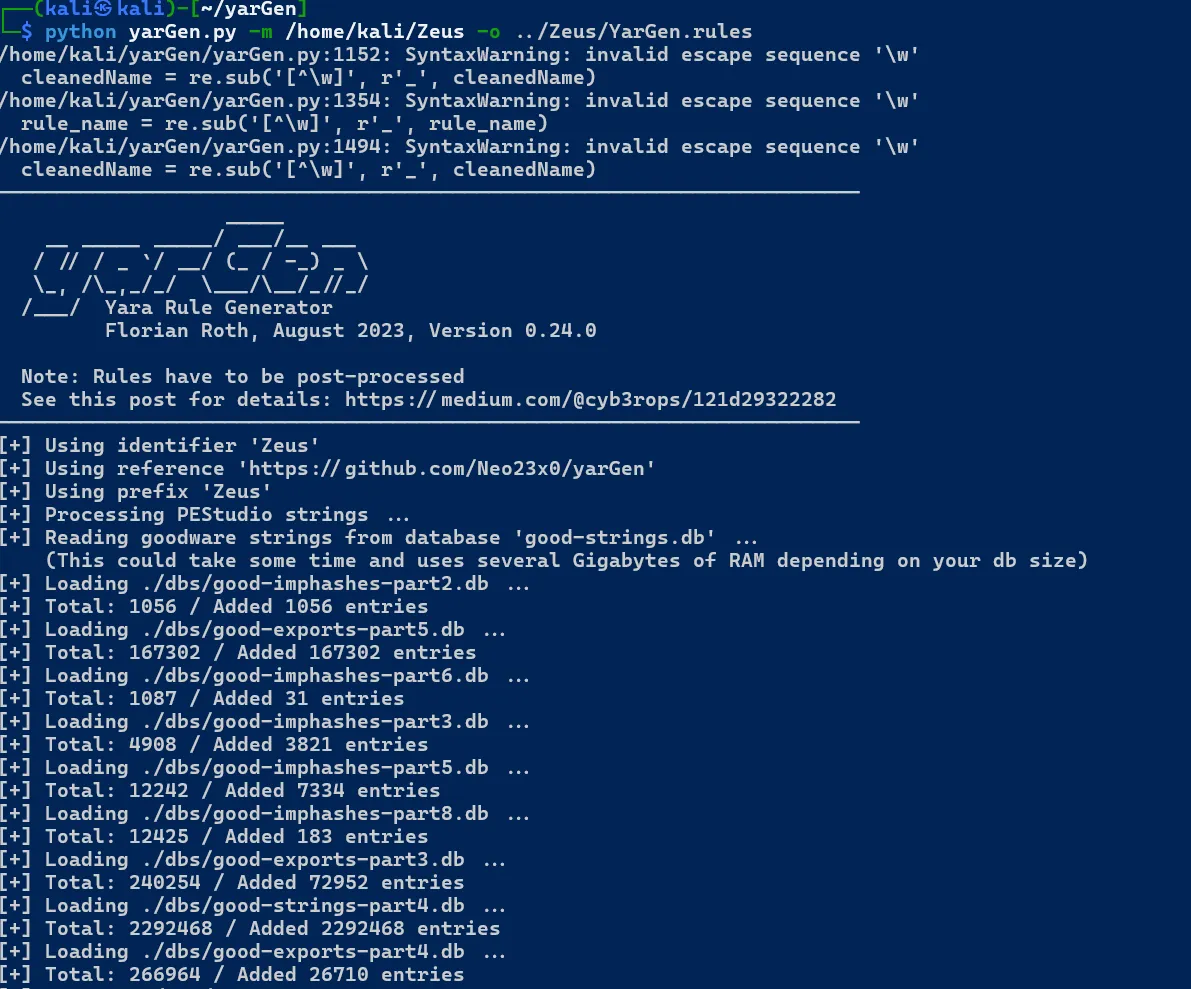
YARA Rules Testing
Testing IOC Detection Result on Malicious File

Testing IOC Detection Result on Memory Dump

Documenting Tested IOCs
